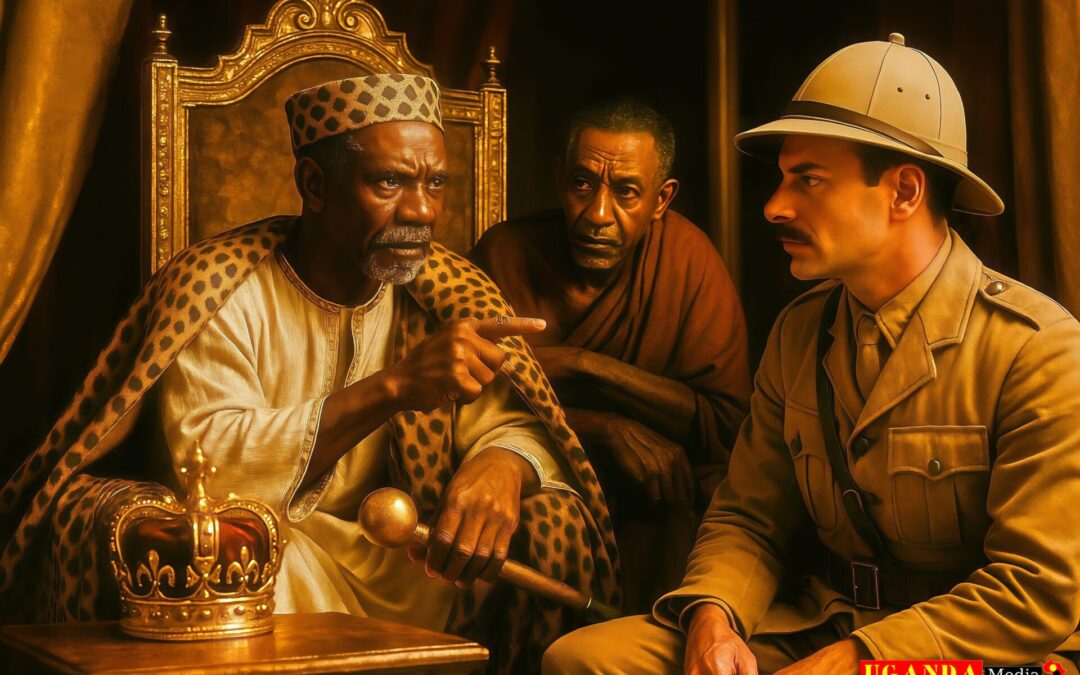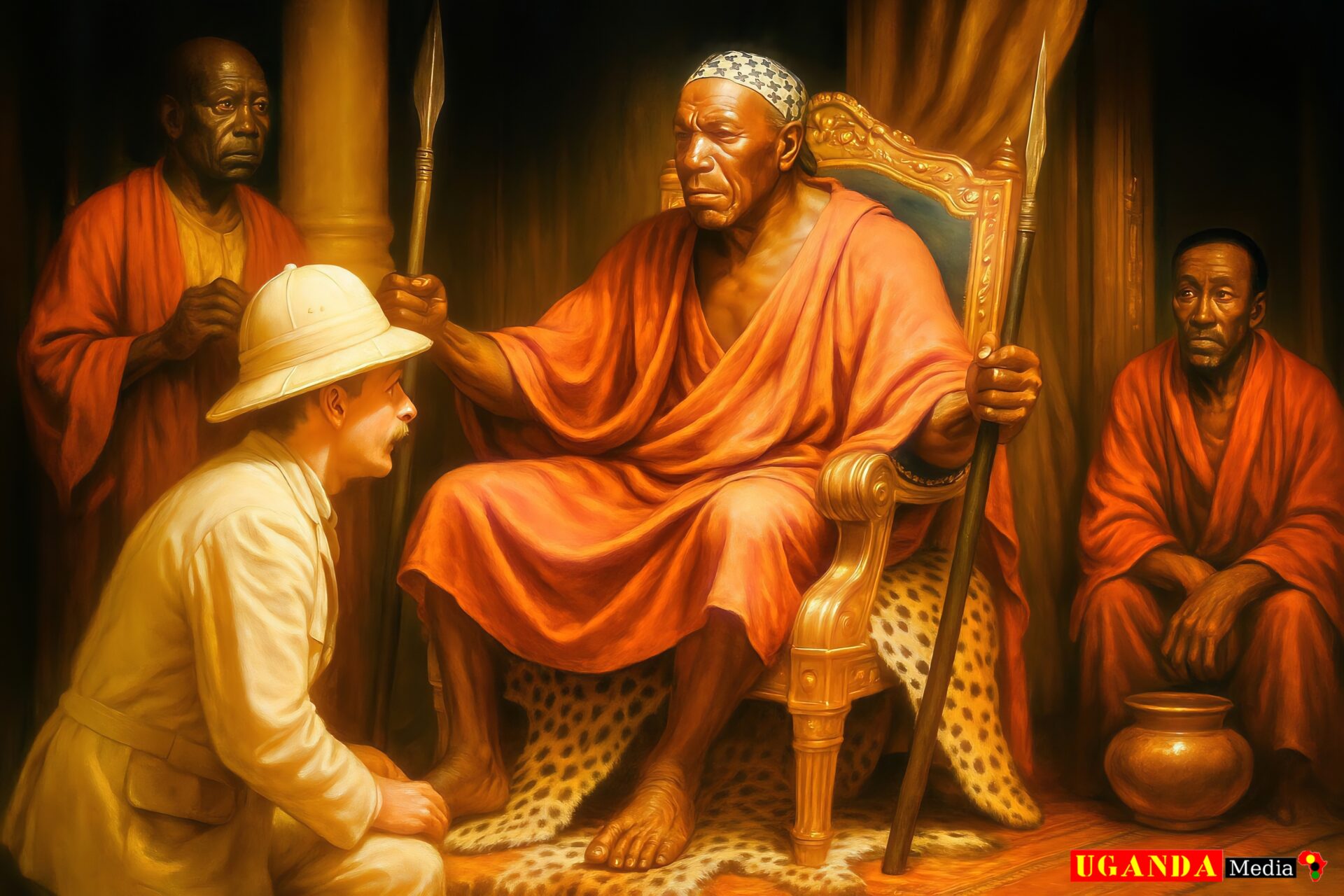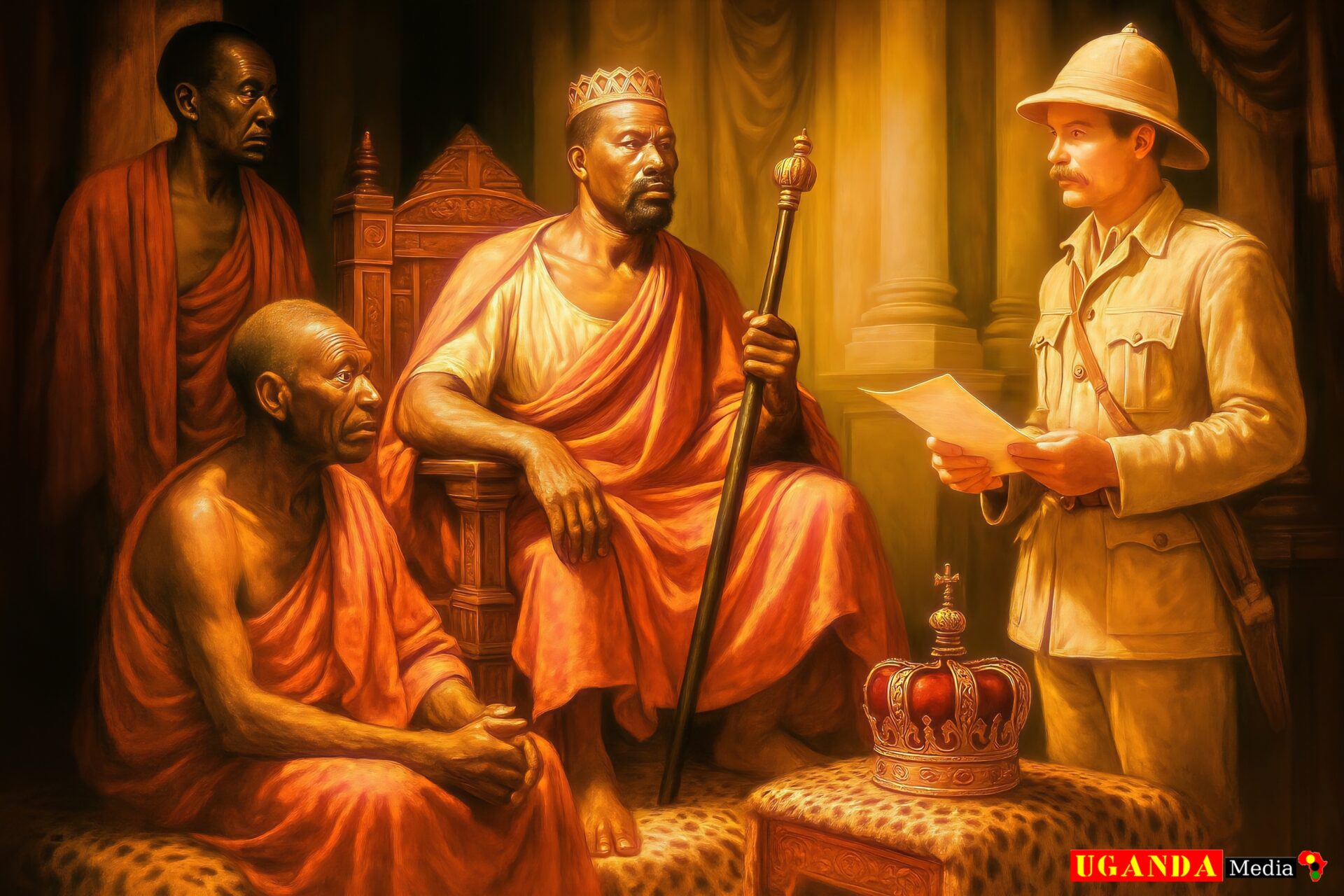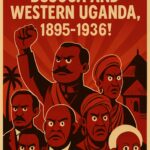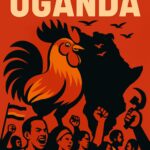Unravelling the Rich Tapestry of Buganda’s History: From Myth to Modern Governance
Buganda, a kingdom steeped in myth, history, and cultural resilience, offers a fascinating lens through which to explore the interplay of tradition and colonial influence in shaping modern Uganda. From the mythical origins of Kintu, Buganda’s first king, to the pragmatic politics of Bakungu chiefs under British rule, this remarkable journey reveals how cultural identity endures amidst external pressures. The 1900 Uganda Agreement, the rise, and fall of Bakungu dominance, and the resurgence of royalist sentiment highlight the complexities of power, land ownership, and social hierarchy in colonial and post-independence Buganda. This exploration delves into structural analyses of myths, the legacy of Apolo Kagwa’s political manoeuvres, and the enduring impact of movements like the Federation of Bataka. By examining these threads, we gain profound insights into governance, cultural preservation, and the quest for justice that continue to shape Buganda’s destiny today. Whether viewed through the lens of myth, history, or socio-political analysis, Buganda’s story remains a testament to the enduring power of tradition in forging a nation’s identity.
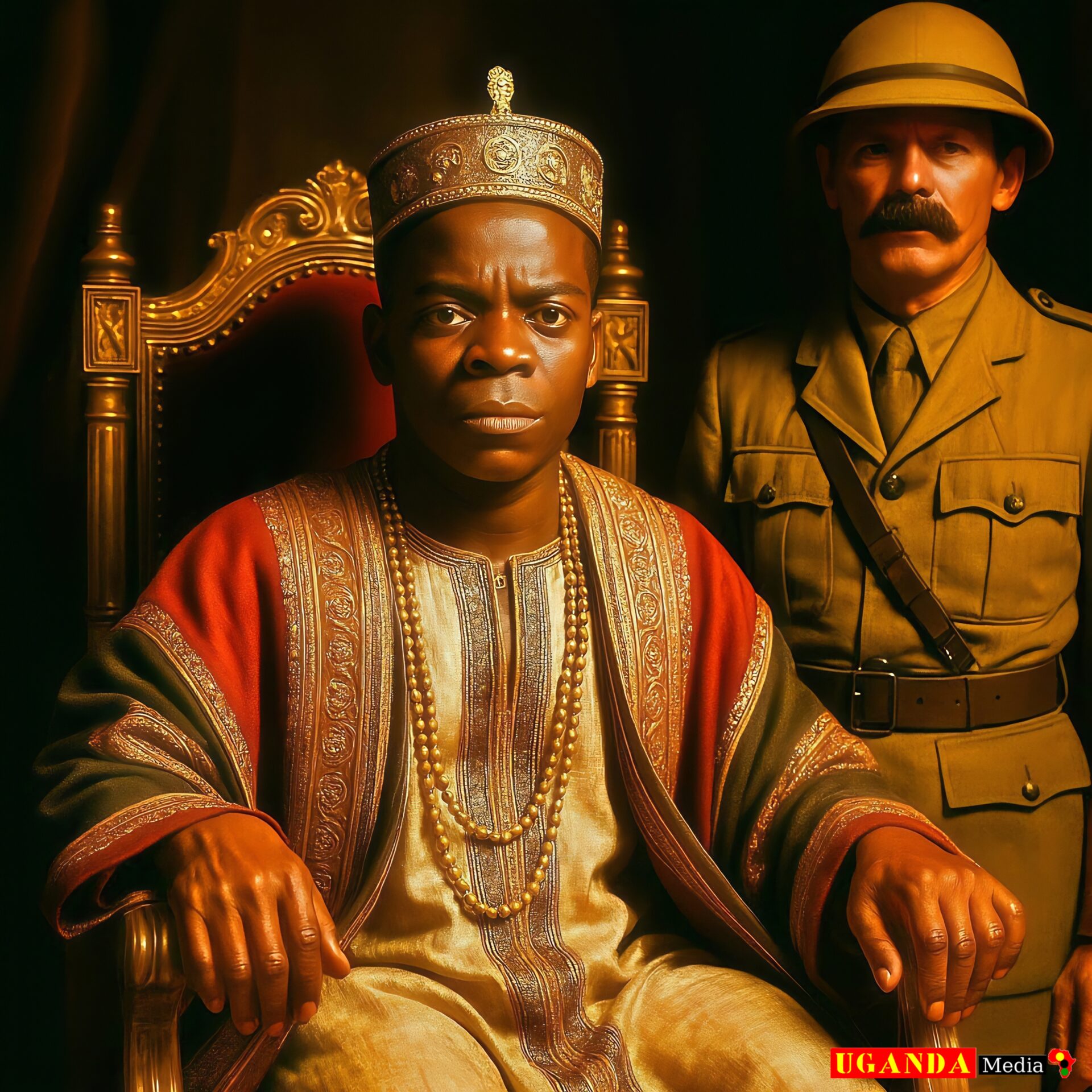
The Mythical Origins of Kintu: A Cornerstone of Ganda Identity
In the heart of Uganda lies Buganda, a kingdom whose cultural and historical identity is deeply rooted in the mythical origins of its first king, Kintu. Revered as the founder of the Buganda dynasty, Kintu’s arrival on the scene of Ganda history is shrouded in myth, blending divine intervention with human ingenuity to create a narrative that has endured for centuries. His story is not merely a tale of kingship but a cornerstone of Ganda identity, shaping how the Baganda people perceive their origins, their unity, and their place in the world.
According to traditional accounts, Kintu emerged from the heavens or distant lands to establish his rule over Buganda. This foundational myth portrays him as a near-divine figure, sent by higher powers to bring order, prosperity, and governance to the region. His name itself—Kintu —is believed to derive from “oku-tunu,” meaning “to unite” or “to gather together,” symbolizing his role in forging a cohesive society out of scattered clans and communities. Through this lens, Kintu’s reign represents more than just political authority; it embodies the very essence of communal harmony and collective progress that defines Buganda’s ethos.
The mythology surrounding Kintu is rich with symbolic elements that resonate deeply within Ugandan culture. One popular version recounts how Kintu descended upon the sacred hill of Magonga, bringing with him livestock, tools, and knowledge essential for agriculture and social organisation. He encountered Nambi, the daughter of Ggulu (the Sky-God), whom he married after overcoming various trials set by her father. Their union is often interpreted as a metaphor for the fusion of earthly endeavour with celestial blessing—a theme recurrent in many African cosmologies.
However, what makes Kintu’s legend particularly compelling is its dual nature: while it serves as an origin story steeped in spirituality, it also provides a framework for understanding early societal structures. For instance, the roles assigned to different clans under Kintu’s leadership reflect a sophisticated division of labour designed to ensure mutual benefit and interdependence among diverse groups. This aspect underscores the pragmatic wisdom embedded within the myth, offering insights into how pre-colonial Buganda managed complexity through collaboration rather than conflict.
Moreover, Kintu’s legacy extends beyond mere folklore; it influences contemporary perceptions of leadership and legitimacy within Buganda. Even today, references to Kintu are invoked during royal ceremonies and public discourses to evoke a sense of continuity and authenticity. His image looms large over modern interpretations of Ganda nationalism, reinforcing ideals of unity, resilience, and self-determination amidst external pressures.
Yet, like any enduring myth, Kintu’s story invites multiple readings and reinterpretations. Some scholars view it primarily as a structural template—a narrative device used to legitimise subsequent rulers by linking them back to a semi-divine progenitor. Others see it as a repository of moral lessons about responsibility, reciprocity, and respect for tradition. Regardless of interpretation, however, there can be no denying the profound impact Kintu’s myth has had on shaping Buganda’s collective consciousness.
In conclusion, the mythical origins of Kintu stand as both a testament to Buganda’s rich oral traditions and a vital component of its socio-political fabric. By exploring these narratives through the prism of British academic rigour applied to Ugandan settings, we gain valuable perspectives on how myths function not only as repositories of cultural memory but also as active agents in constructing identities and guiding behaviours across generations. As such, Kintu remains not just a historical figure but a living symbol of Ganda pride, resilience, and aspiration—a true cornerstone of Ganda identity.
Structural Analysis of Myths: Recurring Themes in Buganda’s Royal Traditions
The structural analysis of myths provides a powerful lens through which to explore the recurring themes that underpin Buganda’s royal traditions. In the context of Uganda, these myths are not merely tales of antiquity but serve as foundational narratives that encode the values, struggles, and aspirations of the Baganda people. By examining the myths surrounding Buganda’s early kings—particularly those of Kintu, Kimera, and Nakibinge—we uncover persistent motifs of succession, conflict, and divine intervention. These elements reflect both the political realities of pre-colonial Buganda and the enduring human concerns with power, legitimacy, and order.

Succession: The Struggle for Legitimacy
One of the most prominent themes in Buganda’s royal myths is the issue of succession. The mythological accounts often revolve around the transfer of power from one ruler to the next, highlighting the tensions and rivalries inherent in this process. For instance, the transition from Kintu to his successors is framed within a narrative of divine sanction and earthly pragmatism. While Kintu is portrayed as a unifying figure sent by higher powers to establish order, subsequent kings face challenges that underscore the fragility of their authority.
The case of Nakibinge exemplifies this theme. According to tradition, Nakibinge’s reign ends tragically when he is killed by the Banyoro during a succession war—a conflict rooted in competing claims to the throne. This story reveals the precariousness of kingship in Buganda, where external threats and internal dissent could destabilise even the most established dynasties. Structurally, such narratives reinforce the idea that succession is never merely a matter of inheritance; it is a dynamic process shaped by alliances, enmities, and the interplay between mortal ambition and divine will.
Conflict: Balancing Power and Tradition
Conflict is another recurring motif in Buganda’s royal myths, manifesting in various forms—between rulers and their rivals, between humans and supernatural forces, or between tradition and innovation. A striking example can be found in the tale of Lutimba, who rises against King Kiggala. Lutimba’s rebellion represents not only a challenge to royal authority but also an exploration of how power is contested and negotiated within the kingdom.
The resolution of such conflicts often involves the use of fetishes or other supernatural aids, underscoring the role of divine intervention in legitimising rulers. When Kiggala defeats Lutimba with the help of a powerful fetish, the victory symbolises more than just military prowess—it affirms the king’s alignment with spiritual forces that safeguard the realm. This structural pattern suggests that conflict is not merely destructive but serves as a mechanism for reaffirming social hierarchies and reinforcing the sanctity of kingship.
Divine Intervention: Bridging Heaven and Earth
Divine intervention is perhaps the most pervasive theme in Buganda’s royal myths, acting as a bridge between the celestial and terrestrial realms. From Kintu’s descent to Nambi’s union with him, these stories consistently evoke the presence of higher powers guiding the destiny of the kingdom. Divine approval—or its absence—is often depicted as a decisive factor in determining the fate of kings and their subjects.
Consider, for example, the account of Kintu consulting ancestral spirits for military assistance during times of crisis. This act reflects a broader belief in the interconnectedness of the spiritual and material worlds, where kings must continually seek validation from unseen forces to maintain their rule. Even in cases like Nakibinge’s demise, where divine favour seems to wane, the underlying message remains clear: no ruler can govern without acknowledging the transcendent dimensions of power.
Structural Patterns Across Myths
When viewed structurally, these recurring themes form a cohesive framework that organises Buganda’s royal traditions. Succession establishes the temporal dimension of kingship, ensuring continuity while exposing vulnerabilities. Conflict introduces the element of tension, creating opportunities for heroes (or anti-heroes) to emerge and redefine the boundaries of authority. Divine intervention adds a vertical axis to the narrative, connecting earthly events to cosmic principles and imbuing them with moral significance.
These patterns resonate deeply within the Ugandan setting, where oral traditions have long served as vehicles for collective memory and cultural identity. They also invite comparisons with other African societies, where similar themes of succession, conflict, and divine sanction appear in myths about kingship. For instance, the Bacwezi legends of Bunyoro-Kitara share striking parallels with Buganda’s royal traditions, suggesting shared cultural roots or mutual influences across the region.
Implications for Understanding Buganda’s History
The structural analysis of myths thus offers valuable insights into Buganda’s historical consciousness. It highlights how the Baganda conceptualised leadership—not as a static institution but as a fluid system constantly renegotiated through acts of succession, contests over power, and appeals to divine authority. Moreover, it underscores the adaptability of these myths, allowing them to remain relevant even as Buganda navigated new challenges under colonial rule.
In conclusion, the structural analysis of myths reveals that Buganda’s royal traditions are far more than mere folklore. They are intricate tapestries woven from recurring themes of succession, conflict, and divine intervention, each thread contributing to a larger narrative that defines the kingdom’s identity. By understanding these patterns, we gain a deeper appreciation of how Buganda’s past continues to shape its present—and how myth itself functions as a living repository of history, culture, and aspiration.
Chronology vs. Myth: Addressing the Tension in Buganda’s Historical Narrative
In the rich tapestry of Buganda’s history, one encounters a fascinating tension between chronology—the linear progression of time—and the timeless, cyclical essence of myth. This duality is central to understanding how the Baganda people have woven their dynastic traditions into a cohesive historical narrative that serves both practical and symbolic purposes. While chronology provides a framework for recounting the succession of kings, myths imbue these narratives with more profound meaning, offering insights into human experience, morality, and cosmic order. In Buganda’s case, this interplay between chronology and myth reflects the complexities of its past and underscores the adaptability of its cultural identity in response to changing circumstances.
The Importance of Chronology in Dynastic Traditions
Chronology is indispensable to Buganda’s dynastic traditions because it anchors the legitimacy of rulers within a temporal sequence. From Kintu, the first king whose arrival marks the foundation of the kingdom, to Nakibinge, whose reign ends tragically at the hands of the Banyoro, each monarch occupies a specific place in the timeline of Buganda’s history. These stories are not merely tales; they form the backbone of Buganda’s political and social structure, legitimising the transfer of power from one generation to the next.
For example, the tradition surrounding Nakibinge’s death during a succession war highlights the fragility of kingship when faced with external threats. By situating such events within a chronological framework, the Baganda create a sense of continuity and inevitability, reinforcing the idea that each ruler’s ascension or downfall contributes to the broader trajectory of the kingdom. Chronology thus functions as a tool for organising collective memory, ensuring that the deeds of past kings remain relevant to present-day concerns.
The Timeless Nature of Myth
In contrast to the rigid linearity of chronology, myth operates on a different plane—one that transcends time and space. As Edmund Leach aptly notes, “myth proper lacks a chronology in any strict sense,” existing instead as a constellation of interconnected themes and motifs that resonate across generations. In Buganda, myths about Kintu’s descent from heaven, Kimera’s mysterious origins, and divine interventions in royal affairs serve as archetypal narratives that address universal questions about authority, conflict, and destiny.
Take, for instance, the recurring motif of divine sanction in Buganda’s royal myths. Whether it is Kintu receiving blessings from ancestral spirits or Kimera being guided by supernatural forces, these stories underscore the belief that kingship derives its legitimacy not solely from earthly lineage but also from higher powers. This timeless quality allows myths to transcend individual reigns, providing a shared vocabulary through which the Baganda can interpret their world. Myths become a mirror reflecting societal values, fears, and aspirations, independent of the specific historical context in which they originated.
Coexistence Through Structural Analysis
The coexistence of chronology and myth in Buganda’s historical narrative can be better understood through structural analysis—a method that reveals how seemingly disparate elements interact to form a unified whole. By examining the traditions surrounding Buganda’s early kings, we see that chronology and myth do not compete but rather complement each other. For example, while the story of Kintu adheres to a chronological framework (he establishes the dynasty), it simultaneously incorporates mythical elements (his celestial origins) that elevate him beyond mere mortality.
This dual nature is evident in the way certain events are recounted. The death of Nakibinge, for instance, is both a chronological milestone—marking the end of an era—and a mythic episode fraught with symbolism. His defeat by the Banyoro could be interpreted as a cautionary tale about hubris and the limits of human power, themes that resonate universally yet remain deeply rooted in Buganda’s cultural consciousness. Similarly, the account of Kiggala defeating Lutimba with the aid of a powerful fetish blends historical detail (the use of military strategy) with mythic significance (the invocation of supernatural forces).
Bridging Past and Present
One reason why chronology and myth coexist so seamlessly in Buganda’s narrative lies in their mutual utility. Chronology lends credibility to claims of dynastic continuity, while myth enriches these claims with layers of meaning that speak to enduring truths. Together, they enable the Baganda to navigate the complexities of their history, balancing factual accuracy with imaginative interpretation.
During the colonial period, this synthesis proved particularly valuable. As British officials sought to impose new administrative structures on Buganda, Bakungu chiefs drew upon both chronological accounts of their ancestors’ achievements and mythical narratives of divine favour to assert their authority. For instance, Apolo Kagwa’s efforts to institutionalise Bakungu dominance through proposals like the Lukiko Iwa Bataka demonstrate how traditional myths could be repurposed to meet modern challenges. By invoking the timeless principles embedded in these myths, Kagwa and his allies were able to frame their political ambitions as extensions of ancient customs, thereby legitimising them in the eyes of both their peers and colonial overlords.
Conclusion: A Dynamic Legacy
Ultimately, the tension between chronology and myth in Buganda’s historical narrative is not a source of conflict but a testament to the resilience and adaptability of its cultural heritage. Chronology grounds the traditions of the early kings in tangible reality, while myth elevates them to the realm of the eternal, ensuring their relevance across time. This dynamic interplay has allowed Buganda to preserve its identity even amid profound transformations, from pre-colonial independence to colonial subjugation and beyond.
As we reflect on this legacy, we are reminded that history is never just a record of what happened; it is also a story we tell ourselves about who we are and where we come from. In Buganda, chronology and myth work together to craft a narrative that is as instructive as it is inspiring—a narrative that continues to shape the lives of its people today.
The Role of Anti-Kings: Examining Rivals to the Throne in Buganda
In the intricate political landscape of pre-colonial Buganda, the concept of anti-kings—or rivals to the throne—played a pivotal role in shaping the dynamics of power and governance. These figures, often portrayed as antagonists in traditional narratives, were not merely adversaries, but integral components of a system designed to maintain balance, legitimacy, and stability within the kingdom. One notable example is Juma during Nakibinge’s reign, whose presence highlights how rival claimants to the throne could both challenge and reinforce the authority of the reigning monarch. By examining the significance of anti-kings in Buganda’s history, we gain more profound insights into the mechanisms that sustained its political order.
Understanding Anti-Kings in Buganda’s Context
The term “anti-king” refers to individuals who contested the legitimacy or rule of an incumbent king, often claiming descent from previous rulers or invoking divine sanction to justify their ambitions. In Buganda, these rival claimants were not uncommon; they emerged periodically throughout the kingdom’s history, particularly during periods of succession crises or external threats. Their existence underscores the fragility of kingship in Buganda, where power was never absolute but constantly negotiated and reaffirmed through acts of diplomacy, military prowess, and ritual performance.
Juma’s case during Nakibinge’s reign exemplifies this phenomenon. According to tradition, Juma positioned himself as a contender for the throne, leveraging his familial ties and alliances with powerful factions, including the Banyoro, to bolster his claim. His actions forced Nakibinge to navigate a delicate balancing act between asserting his authority and addressing the challenges posed by Juma’s rebellion. This interplay between king and anti-king reveals how Buganda’s political system incorporated opposition as a means of ensuring accountability and resilience.
Significance in Maintaining Political Stability
Anti-kings served several critical functions in maintaining political stability within Buganda:
- Checks on Monarchical Power :
The presence of anti-kings acted as a check on the concentration of power in the hands of a single ruler. While the Kabaka wielded significant authority, the possibility of a rival emerging ensured that no monarch could afford to become complacent or autocratic. Instead, kings had to demonstrate competence, fairness, and adherence to cultural norms to retain the loyalty of their subjects. For instance, Nakibinge’s reliance on ancestral consultations and strategic alliances reflects the pressures faced by rulers in legitimising their reign amidst competing claims. - Legitimisation Through Conflict :
Succession wars and conflicts involving anti-kings often resulted in the reaffirmation of the victorious king’s legitimacy. When Nakibinge ultimately triumphed over Juma, his victory was framed not only as a personal achievement but also as divine validation of his right to rule. Such outcomes reinforced the belief that kingship was sanctioned by higher powers, thereby strengthening the ideological foundations of the monarchy. - Integration of Dissent :
Rather than suppressing dissent outright, Buganda’s political culture allowed space for anti-kings to express grievances and mobilise support. This approach helped channel discontent into structured forms of opposition rather than uncontrolled rebellion. By engaging with rivals like Juma, the ruling establishment could address underlying tensions and prevent them from escalating into broader social unrest. - Dynastic Continuity and Adaptability :
Anti-kings also contributed to the adaptability of Buganda’s dynastic traditions. In some cases, rival claimants introduced new ideas or practices that enriched the kingdom’s political institutions. For example, interactions between Nakibinge and Juma may have prompted innovations in military strategy or diplomatic relations, enabling Buganda to respond more effectively to external pressures from neighbouring states such as Bunyoro.
Lessons from Juma’s Rivalry with Nakibinge
Juma’s bid for power during Nakibinge’s reign offers valuable lessons about the complexities of leadership in Buganda. Initially, Juma appeared to pose a formidable threat, securing backing from influential groups and exploiting divisions within the kingdom. However, his eventual downfall illustrates the importance of alliances and resource management in determining the outcome of such contests. Notably, Nakibinge’s decision to seek assistance from the Sese Islands—home to Kibuuka, a revered spiritual figure—demonstrates how kings leveraged religious and supernatural elements to counteract anti-king movements.
Moreover, Juma’s fate serves as a cautionary tale about the risks of overreach. Despite initial successes, he ultimately alienated key allies, including the Banyoro, whose defection proved decisive in tipping the scales against him. This underscores the precarious nature of anti-kings’ positions; while they could destabilise existing regimes, their lack of broad-based support often rendered them vulnerable to collapse once momentum shifted.
Broader Implications for Buganda’s Political Culture
The role of anti-kings extends beyond individual episodes like Juma’s rebellion; it reflects broader patterns within Buganda’s political culture. The coexistence of king and anti-king embodies a dialectical relationship between unity and division, continuity and change. On one hand, the institution of kingship provided a unifying symbol around which the Baganda could rally. On the other hand, the presence of anti-kings introduced an element of dynamism, challenging incumbents to prove their worthiness and adapt to evolving circumstances.
This duality is evident in later periods as well. During British colonial rule, for instance, Bakungu chiefs sometimes adopted strategies reminiscent of anti-kings, positioning themselves as alternative centres of power vis-à-vis the Kabaka. Similarly, movements like the Federation of Bataka drew inspiration from earlier struggles against entrenched elites, echoing the spirit of resistance embodied by anti-kings like Juma.
Conclusion: A Dynamic Equilibrium
In conclusion, the concept of anti-kings in Buganda represents far more than mere rivalry or conflict. It is a testament to the sophistication of Buganda’s political system, which recognised the value of integrating dissent and opposition into its structures of governance. Figures like Juma remind us that political stability does not arise from the absence of challenges but from the ability to manage and resolve them constructively. As Buganda navigated the complexities of succession, external threats, and internal dissent, anti-kings played a crucial role in maintaining equilibrium—a legacy that continues to resonate in contemporary discussions of leadership and governance in Uganda.
- Checks on Monarchical Power :
Foreign Relations in Early Buganda: Analysing Interactions with Neighbouring Kingdoms
The geopolitical landscape of early Buganda was shaped significantly by its interactions with neighbouring kingdoms, particularly Bunyoro. These relationships were complex and multifaceted, encompassing both conflict and cooperation. Raids, alliances, and diplomatic negotiations formed the backbone of Buganda’s foreign relations during this period, reflecting a dynamic interplay of power, ambition, and survival. By examining these interactions through accounts preserved in oral traditions and historical records, we gain valuable insights into how Buganda navigated its regional environment to emerge as one of East Africa’s most influential pre-colonial states.
The Role of Raids in Defining Power Dynamics
Raids were a central feature of Buganda’s interactions with neighbouring kingdoms, serving multiple purposes: acquiring resources, asserting dominance, and testing military capabilities. One notable example is found in the reign of Kimera, whose expeditions into Busoga—to raid cattle—highlighted Buganda’s expansionist tendencies. While such raids often resulted in material gains, they also carried significant risks. For instance, Kimera’s expedition to Busoga ultimately failed, underscoring the challenges of overextending military campaigns against well-defended territories.
Similarly, accounts from later periods reveal that Buganda’s raids on Bunyoro were not always successful. During Nakibinge’s reign, conflicts with Bunyoro escalated into full-scale succession wars, partly fuelled by rival claimants like Juma seeking external support. Although Nakibinge initially sought assistance from the Banyoro, their eventual betrayal marked a turning point in his fortunes. This episode illustrates how reliance on foreign allies could be double-edged, offering temporary advantages while exposing vulnerabilities if those alliances faltered.
Alliances as Strategic Tools
Alliances played an equally critical role in shaping Buganda’s geopolitical strategy. These partnerships were often forged through marriage, diplomacy, or mutual interests, creating networks of loyalty and obligation that transcended immediate territorial boundaries. A prime example can be seen in Nakibinge’s consultation with ancestral spirits and subsequent alliance with the Sese Islands, where Kibuuka—a revered spiritual figure—provided crucial aid during his struggle against Juma. Such alliances underscored the importance of supernatural sanction alongside earthly pragmatism in legitimizing rulership and securing victory.

Buganda’s relationship with Bunyoro offers another compelling case study of shifting alliances. Initially characterized by hostility, this relationship occasionally softened into uneasy cooperation when shared threats emerged. For instance, during periods of external pressure from Nilotic groups or other rivals, Buganda and Bunyoro sometimes coordinated efforts to repel common enemies. However, these moments of collaboration were fleeting, as underlying tensions over land, resources, and hegemony repeatedly resurfaced.
Diplomatic Manoeuvring and Symbolic Gestures
Diplomacy was another key aspect of Buganda’s foreign relations, employed to manage conflicts and maintain stability. Oral traditions recount instances where symbolic gestures—such as gift exchanges or ceremonial visits—helped ease hostilities between Buganda and its neighbours. These acts served not only practical purposes but also reinforced cultural norms of reciprocity and respect.
For example, the tradition of presenting tribute to powerful figures within neighbouring kingdoms acted as a form of deference (okufugibwa) that smoothed over potential disputes. This practice mirrored the deferential behaviour expected at the Kabaka’s court, demonstrating how traditional political culture adapted to broader diplomatic contexts. Even during times of tension, such rituals provided a framework for negotiation and conflict resolution.
Economic Dimensions of Foreign Relations
Economic considerations also influenced Buganda’s interactions with neighbouring kingdoms. Control over trade routes and access to valuable commodities like iron tools, livestock, and salt often motivated both raids and alliances. Buganda’s strategic location near Lake Victoria allowed it to dominate regional trade networks, enhancing its wealth and influence. However, this economic prominence also made it a target for rival powers like Bunyoro, leading to prolonged competition for control over lucrative resources.
Moreover, Buganda’s ability to leverage its economic position through alliances further solidified its status as a dominant force in the region. For instance, partnerships with smaller polities along its borders enabled Buganda to extend its reach without confrontation, effectively expanding its sphere of influence through proxy arrangements.
Lessons from Buganda’s Geopolitical Landscape
The accounts of raids, alliances, and diplomatic engagements provide several lessons about Buganda’s geopolitical strategies:
- Flexibility and Adaptability : Buganda demonstrated remarkable flexibility in adjusting its tactics based on circumstances. Whether launching raids, forging alliances, or engaging in diplomacy, the kingdom adapted its approach to maximize benefits and mitigate risks.
- Balance of Power : The constant jockeying for supremacy among neighbouring kingdoms created a delicate balance of power. Buganda’s success lay in its ability to navigate this equilibrium, leveraging opportunities while avoiding catastrophic miscalculations.
- Cultural Continuity Amid Change : Despite the fluidity of its foreign relations, Buganda maintained continuity in its cultural practices, using traditions like okufugibwa to legitimize actions and reinforce social cohesion.
- Interdependence with Neighbours : While Buganda sought to assert its dominance, it remained deeply interconnected with its neighbours. This interdependence meant that no single kingdom could thrive in isolation; instead, they coexisted within a web of mutual dependencies.
Conclusion: A Legacy of Strategic Engagement
In conclusion, Buganda’s foreign relations in its early history reveal a sophisticated understanding of geopolitics, rooted in both pragmatic considerations and cultural values. Through raids, alliances, and diplomatic manoeuvres, Buganda carved out a prominent place for itself in the regional order, balancing ambition with caution. These interactions defined its geopolitical landscape and laid the groundwork for enduring patterns of engagement that persisted even under colonial rule. As modern Uganda reflects on its rich heritage, the legacy of Buganda’s strategic engagement with its neighbours continues to offer timeless insights into the art of statecraft and the complexities of human interaction.
Kintu’s Itinerary Through Time: Tracing the Symbolic Journey Across Buganda’s Evolving Self-Perception
The story of Kintu, the first king of Buganda, is not merely a static origin myth but a dynamic narrative that evolves across time and retellings. Each version of Kintu’s journey—whether he descends from heaven, arrives from distant lands, or emerges through divine intervention—mirrors Buganda’s shifting self-perception as it navigates its history, culture, and identity. By tracing Kintu’s symbolic itinerary through these variations, we uncover how the Baganda have reimagined their foundational myths to reflect changes in societal values, political structures, and external influences.
The Mythic Origins of Kintu
In its earliest iterations, Kintu’s arrival in Buganda is deeply rooted in cosmological imagery. According to one prominent tradition, Kintu descends from the heavens, bringing with him livestock, tools, and knowledge essential for agriculture and social organisation. This celestial origin underscores the belief that Buganda’s destiny was divinely ordained—a reflection of an era when the kingdom sought to legitimise its existence through spiritual sanction. In this version, Kintu embodies both earthly leadership and heavenly providence, symbolising the harmonious union between humanity and the supernatural.
However, other accounts depict Kintu as arriving from distant lands, often accompanied by companions who represent different clans. These narratives highlight Buganda’s origins as a melting pot of diverse groups unified under a single ruler. The emphasis here shifts from divine authority to human collaboration, reflecting a period when Buganda may have been consolidating alliances with neighbouring communities. Such versions suggest a growing awareness of the importance of inclusivity and collective effort in shaping the kingdom’s identity.
Shifting Focus: From Autochthony to Expansion
As Buganda expanded territorially and politically, so too did the portrayal of Kintu evolve. Early traditions tend to frame Kintu as an autochthonous figure—a native son whose roots lie firmly within the land he governs. This focus on indigeneity aligns with Buganda’s initial self-perception as a distinct entity bound to its ancestral territory. However, later versions increasingly depict Kintu as a foreigner who conquers or integrates into existing local populations. This shift mirrors Buganda’s transformation from a relatively isolated polity into a regional power capable of absorbing and assimilating outsiders.
For example, in some renditions, Kintu encounters Nambi, the daughter of Ggulu (the Sky-God), during his travels. Their union symbolises the fusion of the celestial and terrestrial realms, reinforcing Buganda’s claim to divine favour while also introducing themes of intermarriage and cultural exchange. Similarly, tales of Kintu overcoming challenges posed by rival claimants or hostile forces mirror Buganda’s historical struggles against external threats, such as raids from Bunyoro or internal dissent among anti-kings like Juma.
Adaptation to Colonial Contexts
Under British colonial rule, Kintu’s story took on new dimensions, reflecting Buganda’s efforts to reconcile traditional values with modern realities. During this period, Bakungu chiefs often invoked Kintu’s legacy to justify their continued dominance, presenting themselves as custodians of an unbroken lineage stretching back to the kingdom’s founding father. At the same time, Christian missionaries introduced alternative interpretations of Kintu’s role, framing him as a proto-Christian figure aligned with Western ideals of progress and civilisation.
These adaptations illustrate how Buganda’s evolving self-perception responded to colonial pressures. On one hand, there was a desire to preserve indigenous traditions and assert cultural autonomy; on the other, there was recognition of the need to align with colonial expectations to maintain relevance. Kintu thus became a bridge between past and present, embodying both continuity and change.
Reflections of Societal Values
Throughout its various incarnations, Kintu’s journey reflects broader societal values at play within Buganda. For instance:
Unity Amid Diversity : Stories emphasising Kintu’s integration of disparate clans highlight Buganda’s long-standing commitment to unity despite ethnic and linguistic differences.
- Divine Legitimacy vs. Human Agency : Accounts oscillating between divine intervention and human ingenuity reveal ongoing debates about the source of legitimate authority—whether derived from higher powers or earned through personal merit.
- Expansionist Ambitions : Narratives depicting Kintu as a conqueror underscore Buganda’s aspirations for territorial and political dominance, particularly during periods of heightened competition with neighbouring kingdoms.
- Cultural Synthesis : Tales incorporating elements of both African spirituality and European Christianity demonstrate Buganda’s capacity for cultural adaptation without losing sight of its core identity.
Kintu’s Legacy in Modern Buganda
Today, Kintu remains a potent symbol of Buganda’s resilience and adaptability. His journey through time serves as a metaphor for the kingdom’s ability to navigate challenges while remaining true to its roots. Whether viewed as a divine messenger, a unifying leader, or a strategic conqueror, Kintu encapsulates the multifaceted nature of Buganda’s self-perception—a blend of tradition, pragmatism, and innovation.
In conclusion, tracing Kintu’s itinerary across different versions of his story reveals how Buganda has continually redefined itself in response to changing circumstances. From its mythical beginnings to its colonial encounters, Buganda’s evolving self-perception finds expression in the enduring figure of Kintu. As the Baganda look toward the future, they carry with them the lessons embedded in Kintu’s timeless journey—a reminder that even the most ancient stories can illuminate paths forward in an ever-changing world.
Kimera and Dynastic Shifts: The Implications of a Non-Autochthonous Leadership
The ascension of Kimera as one of Buganda’s early kings marks a pivotal moment in the kingdom’s history—a transition from autochthonous origins to non-autochthonous leadership. This shift is not merely a change in dynastic lineage but a profound transformation in how Buganda conceptualised its identity, legitimacy, and political structure. By examining Kimera’s story through oral traditions, historical accounts, and structural analysis, we uncover how his arrival reshaped Buganda’s self-perception and set the stage for centuries of evolving governance.
Kimera’s Arrival: A Break from Autochthony
In Buganda’s traditional narratives, Kintu—the first king—is often depicted as an autochthonous figure, emerging either directly from the heavens or as a native son deeply connected to the land he governed. His reign symbolises Buganda’s primordial unity, with the kingdom considered organically rooted in its ancestral soil. However, Kimera’s ascension introduces a stark departure from this paradigm. According to tradition, Kimera arrives from the west, specifically from Bunyoro, bringing with him new customs, practices, and claims to authority.
This narrative aligns with broader theories about Buganda’s pre-colonial history, which suggest that the kingdom underwent significant cultural and political influences from neighbouring states like Bunyoro-Kitara. Kimera’s foreign origins are central to these accounts, highlighting a deliberate effort by later generations to reconcile Buganda’s indigenous roots with external contributions. His arrival signals a recognition that Buganda’s greatness was not solely derived from within but also enriched by interactions with other polities.
Structural Analysis of Kimera’s Role
From a structural perspective, Kimera’s story embodies themes of integration and synthesis. Unlike Kintu, whose myth revolves around divine sanction and celestial descent, Kimera’s tale emphasises human agency and survival. One version recounts how Kimera was saved and raised by Mulegeya, a potter from the Sese Islands, after being abandoned in a clay pot. This act of salvation underscores the importance of collaboration between ordinary citizens and future leaders, suggesting that even those of noble birth require communal support to ascend to power.
Moreover, Kimera’s eventual rise to kingship reflects a careful balancing act between continuity and innovation. While he represents a break from autochthonous leadership, his rule does not entirely displace existing traditions. Instead, it incorporates elements of both indigenous and foreign systems, creating a hybrid model of governance that would define Buganda’s political culture for generations. This synthesis is evident in the way Kimera integrates himself into Buganda’s clan-based society, forging alliances and securing loyalty through marriage and patronage.
Implications for Buganda’s Political Identity
Kimera’s ascension carries profound implications for Buganda’s understanding of itself as a kingdom. First and foremost, it challenges the notion of pure autochthony as the sole basis for legitimacy. By embracing a ruler of non-native origin, Buganda demonstrates its capacity for adaptation and inclusivity, qualities that would prove invaluable in navigating regional rivalries and internal dissent. This openness to external influences also positions Buganda as a dynamic entity capable of absorbing and transforming foreign ideas into local strengths.
Secondly, Kimera’s reign signifies a shift toward more institutionalised forms of leadership. Whereas earlier kings like Kintu were often portrayed as semi-divine figures operating within a largely informal framework, Kimera’s legacy reflects a growing emphasis on administrative efficiency and bureaucratic organisation. This trend becomes increasingly apparent in subsequent reigns, where the role of hereditary chiefs (Bakungu) gains prominence alongside the monarchy itself.
Finally, Kimera’s story reinforces the theme of resilience in the face of adversity. His survival against considerable odds—being abandoned, then rescued and nurtured by humble individuals—mirrors Buganda’s own journey from a relatively isolated polity to a dominant force in the region. This narrative serves as a powerful metaphor for the kingdom’s ability to overcome challenges while remaining true to its core values.
Reconciling Tradition and Modernity under Colonial Rule
Under British colonial rule, Kimera’s legacy took on renewed significance as Bakungu chiefs sought to legitimise their continued dominance. By invoking Kimera’s example, they presented themselves as custodians of a long-standing tradition that blended indigenous and foreign elements. This strategy allowed them to navigate the complexities of colonial administration without appearing entirely subservient to European interests.
At the same time, Kimera’s story provided a counterpoint to colonial narratives that sought to portray African societies as static and unchanging. By highlighting the dynamism inherent in Buganda’s dynastic shifts, Kimera’s tale offered a reminder of the kingdom’s historical adaptability—a quality that resonated deeply with Baganda intellectuals and leaders during the struggle for independence.
Conclusion: A Legacy of Transformation
In conclusion, Kimera’s ascension represents far more than a simple change in rulership; it symbolises a fundamental reorientation in Buganda’s political and cultural identity. From breaking away from autochthonous origins to embracing a hybrid model of leadership, Kimera’s reign laid the groundwork for a kingdom that thrived on diversity, innovation, and resilience. As modern Uganda reflects on its rich heritage, Kimera’s legacy continues to inspire discussions about the balance between tradition and progress, offering timeless lessons for navigating the complexities of leadership and governance.
Incest Taboos and Royal Power: Exploring Instances Among Buganda’s Kings
Incest taboos have long held a significant place in the cultural, social, and political fabric of many societies, including Buganda. Within the context of Buganda’s royal traditions, instances of incest—such as those involving King Kiggala—are not merely personal transgressions but deeply symbolic acts that reveal tensions between divine authority, human frailty, and societal norms. These episodes shed light on how royal power was both reinforced and undermined through violations of established moral codes. By examining these narratives within their historical and cultural settings, we can better understand the complex interplay between taboo, legitimacy, and governance in pre-colonial Uganda.
The Case of Kiggala: A Study in Transgression
One of the most striking examples of incest among Buganda’s kings is found in the reign of Kiggala. According to oral traditions, Kiggala committed incest with his sister, an act that violated one of the most sacred prohibitions in Ganda society. This transgression is often interpreted as an overvaluation of blood relations—a theme recurrent in Buganda’s mythology. For instance, earlier traditions depict Lumansi’s death at the hands of his kin because of excessive familial loyalty. Similarly, Kiggala’s actions reflect a disregard for the boundaries that define acceptable relationships within the royal family.
The implications of Kiggala’s incestuous behaviour extend beyond the personal realm. His transgression serves as a cautionary tale about the dangers of unchecked power and the erosion of moral order. Traditions recount how Kiggala’s children, born from this illicit union, were deemed unnatural or non-human (“not real offspring”), highlighting the belief that such violations disrupt cosmic harmony. Furthermore, Kiggala’s eventual descent into madness and death underscores the idea that rulers who defy societal norms risk losing not only their sanity, but also their divine mandate to govern.
Reinforcing vs. Undermining Royal Authority
While incest taboos generally functioned to preserve social cohesion and regulate reproduction, their breach could either reinforce or undermine royal authority depending on the context. On one hand, acts of incest might be interpreted as evidence of divine favour or exceptional status. In some African kingdoms, rulers were considered semi-divine beings whose actions transcended ordinary ethical constraints. From this perspective, Kiggala’s transgression could be considered an assertion of his unique position above conventional laws—a demonstration of his unparalleled authority.
On the other hand, however, incestuous behaviour frequently served to delegitimise rulers by exposing their fallibility and hubris. In Buganda, where the king’s legitimacy rested partly on his ability to uphold moral and spiritual standards, any deviation from accepted norms carried severe consequences. Kiggala’s downfall illustrates how even the most powerful figures were subject to scrutiny and accountability. His story reinforces the principle that kingship was not an absolute right but a privilege contingent upon adherence to cultural values.
Structural Analysis of Incest Themes
From a structural standpoint, incest taboos in Buganda’s royal traditions embody broader themes of balance and excess. Acts of incest represent an overvaluation of blood relations, disrupting the equilibrium between individual ambition and collective welfare. Conversely, the punishment meted out to transgressors—whether through madness, death, or loss of lineage—restores this balance by reaffirming societal norms.
Kiggala’s narrative fits neatly into this framework. His initial act of incest symbolises an imbalance caused by prioritising familial ties over communal obligations. The subsequent chaos—his insanity, the unnatural nature of his offspring, and his eventual demise—represents the inevitable collapse of systems that ignore fundamental principles of order. Thus, Kiggala’s story functions as both a warning and a corrective mechanism, ensuring that future generations remain mindful of the limits imposed by tradition.
Broader Implications for Buganda’s Political Culture
The exploration of incest taboos provides valuable insights into Buganda’s political culture. First and foremost, it highlights the centrality of morality in legitimising leadership. Kings were not merely political figures; they embodied the virtues and aspirations of their people. Any failure to uphold these ideals threatened the stability of the entire kingdom.
Secondly, the treatment of incestuous rulers reflects Buganda’s adaptability in addressing crises of legitimacy. By condemning transgressions like Kiggala’s, the Baganda demonstrated their commitment to preserving institutional integrity while simultaneously allowing room for reinterpretation and adaptation. This flexibility enabled Buganda to navigate internal dissent and external pressures throughout its history.
Finally, the persistence of incest themes in Buganda’s royal traditions underscores the enduring relevance of myth in shaping collective memory. Even under colonial rule, when Bakungu chiefs sought to consolidate their dominance, references to ancestral stories—including those involving incest—were invoked to justify claims of legitimacy. These narratives bridged past and present, offering continuity amidst profound transformations.
Lessons from Kiggala’s Legacy
Kiggala’s legacy offers several lessons about the role of taboo in governance:
- Accountability : No ruler, regardless of status, is above reproach. Kiggala’s tragic fate reminds us that authority must always be tempered by responsibility.
- Symbolic Power : Myths surrounding incest serve as potent tools for reinforcing cultural values and maintaining social order. They provide a shared language through which communities interpret and respond to challenges.
- Balance and Restraint : The recurring motif of excess versus moderation highlights the importance of balance in leadership. Successful rulers are those who navigate the fine line between asserting their will and respecting communal boundaries.
- Adaptability : Despite rigid taboos, Buganda’s political system exhibited remarkable resilience, adapting to new circumstances without abandoning core principles.
Conclusion: A Mirror to Human Complexity
In conclusion, instances of incest among Buganda’s kings, exemplified by Kiggala’s transgressions, reveal the intricate relationship between taboo, power, and identity. Far from being mere scandals, these episodes illuminate deeper truths about the human condition—the tension between ambition and restraint, the fragility of authority, and the enduring quest for harmony. As modern Uganda reflects on its rich heritage, the stories of Kiggala and others like him continue to resonate, offering timeless lessons about the responsibilities of leadership and the enduring power of tradition.
Fetishes and Supernatural Aid: Investigating Their Role in Legitimising Kingship
In Buganda’s rich tapestry of tradition, the use of fetishes and other supernatural elements played a pivotal role in legitimising kingship, especially during periods of conflict such as Lutimba’s rebellion. These mystical tools were not mere relics or symbols but active agents in the political and spiritual landscape of pre-colonial Uganda. By examining their deployment in royal narratives, we uncover how the Baganda integrated the divine into the mundane, reinforcing the authority of their kings through acts of supernatural intervention.
The Power of Fetishes in Buganda’s Royal Traditions
Fetishes—objects imbued with spiritual power—were central to Buganda’s belief system and governance structures. They served as tangible manifestations of the unseen forces that governed the cosmos, bridging the gap between the earthly and the divine. For Buganda’s kings, possessing or invoking a powerful fetish was often considered proof of divine favour, a critical component of legitimacy in a society where rulers were expected to harmonise both human and spiritual realms.
One notable example is found in the account of King Kiggala’s victory over Lutimba. According to oral traditions, Kiggala obtained a powerful fetish—a superhuman force—that enabled him to defeat his rival. This fetish did not merely act as a weapon; it symbolised the alignment of Kiggala’s reign with higher powers, suggesting that his rule was sanctioned by the gods themselves. In this context, the fetish becomes more than an object—it transforms into a narrative device that underscores the moral and spiritual dimensions of kingship.
The invocation of such supernatural aid during conflicts like Lutimba’s rebellion highlights the dual nature of leadership in Buganda. On one hand, kings were temporal figures tasked with governing their subjects; on the other, they were spiritual intermediaries responsible for maintaining cosmic balance. By wielding fetishes, kings demonstrated their ability to harness supernatural forces, thereby proving their worthiness to lead.
Structural Analysis of Supernatural Elements
From a structural perspective, the use of fetishes in Buganda’s royal traditions embodies broader themes of power, legitimacy, and resistance. Acts of supernatural intervention often occur at moments of crisis, reflecting the tension between order and chaos. For instance, Lutimba’s rebellion represents an attempt to disrupt the established hierarchy, while Kiggala’s recourse to a fetish signifies the restoration of equilibrium through divine means.
This dynamic mirrors Edmund Leach’s observation that myth operates through persistent rearrangements of elements present from the start. In the case of Kiggala and Lutimba, the fetish serves as a recurring motif that reconfigures the relationship between challenger and incumbent. Its presence transforms what might otherwise be a straightforward military contest into a cosmic struggle, elevating the stakes and imbuing the outcome with deeper significance.
Moreover, the structural role of fetishes extends beyond individual episodes to encompass larger patterns within Buganda’s history. Accounts of kings relying on supernatural aid—whether through fetishes, ancestral spirits, or celestial beings—are recurrent motifs that reinforce the idea of kingship as divinely ordained. These narratives provide a framework for interpreting events, allowing the Baganda to make sense of victories and defeats in terms of moral and spiritual causality rather than purely material factors.
Legitimisation Through Supernatural Intervention
The legitimisation of kingship through supernatural aid has profound implications for understanding Buganda’s political culture. First and foremost, it underscores the inseparability of religious and secular authority in pre-colonial Uganda. A king who could command the loyalty of his subjects through effective governance also needed to demonstrate his connection to the divine realm. Without this spiritual dimension, his claim to power risked being perceived as incomplete or illegitimate.
During Lutimba’s rebellion, Kiggala’s acquisition of a fetish exemplifies how supernatural elements were deployed to bolster royal authority. By securing this fetish, Kiggala gained a tactical advantage and reinforced his image as a ruler favoured by higher powers. This dual benefit—practical and symbolic—illustrates the versatility of fetishes as instruments of governance. They allowed kings to project strength while simultaneously addressing existential concerns about their right to rule.
Furthermore, the reliance on supernatural aid reflects a broader cultural emphasis on reciprocity and obligation. Just as subjects owed allegiance to their king, so too did the king owe deference to the spiritual forces underpinning his authority. This mutual dependence created a delicate balance, ensuring that no single entity—whether human or divine—could dominate entirely. In this way, fetishes functioned as mediators, facilitating interactions between different planes of existence and maintaining harmony within the kingdom.
Broader Implications for Buganda’s Political Culture
The investigation of fetishes and supernatural aid reveals several key insights into Buganda’s political culture:
- Integration of Sacred and Secular : Buganda’s kingship cannot be understood without considering its spiritual dimensions. Fetishes and other supernatural elements bridge the gap between earthly governance and divine sanction, creating a holistic model of leadership.
- Narratives of Legitimacy : Stories involving fetishes serve as vehicles for communicating ideals of legitimacy. Whether through victory in battle or resolution of crises, these narratives reinforce the notion that true authority derives from alignment with higher principles.
- Resilience Amid Conflict : The use of supernatural aid demonstrates Buganda’s capacity to adapt to challenges while preserving core values. Even during periods of turmoil, such as Lutimba’s rebellion, the kingdom maintained continuity by appealing to enduring beliefs.
- Symbolic Capital : Fetishes represent a form of symbolic capital that enhances a ruler’s prestige and influence. Possessing or invoking them confers not only practical benefits but also intangible advantages, such as increased respect and loyalty from subjects.
Lessons from Kiggala’s Victory Over Lutimba
Kiggala’s triumph over Lutimba offers valuable lessons about the interplay between power and spirituality in Buganda:
- Divine Sanction as a Source of Authority : No ruler can sustain legitimacy without acknowledging the role of the divine. Kiggala’s success hinges not only on his military prowess but also on his ability to invoke supernatural aid.
- Resilience Through Adaptation : The integration of fetishes into governance reflects Buganda’s adaptability. By incorporating new elements into existing frameworks, the kingdom ensured its survival amidst changing circumstances.
- Moral Dimensions of Leadership : Conflicts like Lutimba’s rebellion are not merely battles for territory or resources; they are tests of moral and spiritual integrity. Victories achieved through supernatural means carry greater weight because they affirm the righteousness of the cause.
- Cultural Continuity : Despite external pressures, Buganda preserved its cultural identity by embedding traditional practices—such as the use of fetishes—into its political institutions. This continuity provided a foundation upon which future generations could build.
Conclusion: A Legacy of Spiritual Sovereignty
In conclusion, the use of fetishes and supernatural aid in legitimising kingship reflects Buganda’s sophisticated approach to governance. Far from being relics of superstition, these elements were integral to the kingdom’s political and spiritual fabric, offering a means of navigating crises while upholding cherished values. As modern Uganda reflects on its heritage, the legacy of Kiggala and others like him continues to inspire discussions about the intersection of faith, power, and identity. Through their stories, we see how Buganda’s early kings crafted a vision of sovereignty that transcended the temporal, reaching into the eternal heart of their people’s aspirations.
British Colonial Arrival: Admiration for Buganda’s Sophisticated Governance Systems
The arrival of British colonial officials in Buganda marked a pivotal moment in the kingdom’s history, one defined by both admiration and exploitation. At first, British administrators were struck by the sophistication of Buganda’s governance systems, which stood in stark contrast to the more fragmented political structures they encountered elsewhere in Uganda. This initial admiration laid the groundwork for a complex relationship between the British and the Baganda, characterised by collaboration, manipulation, and eventual tension as colonial rule progressed.
Early Impressions of Buganda’s Governance
When British officials first arrived in Buganda during the late 19th century, they found a highly organised and hierarchical society that appeared remarkably advanced compared to other regions under their purview. Sir Harry Johnston, one of the earliest British envoys to Uganda, famously likened the Baganda to “the Japanese of Africa,” praising their politeness, quickness of intelligence, and appreciation of beauty. These observations reflected a broader sentiment among early colonial administrators, who viewed Buganda as a model of indigenous civilisation capable of adapting to Western influences.
Buganda’s governance system was particularly impressive to the British. The kingdom operated under a centralised monarchy led by the Kabaka, supported by a network of hereditary chiefs (Bakungu) and a legislative council known as the Lukiko. This structure allowed for efficient administration, dispute resolution, and tax collection—functions that aligned closely with colonial objectives. Unlike many other African societies at the time, Buganda already had mechanisms in place for managing large populations and territories, making it an ideal partner for the British in establishing control over the wider region.
The Military Factor: Mutual Dependence
Beyond its administrative efficiency, Buganda’s military capabilities further enhanced its appeal to the British. During the turbulent years of the 1890s, when Captain Frederick Lugard sought to consolidate British influence in Uganda, he relied heavily on the support of Bakungu chiefs and their militias. For example, during the 1897 troubles involving Mwanga II and rebellious Sudanese soldiers, Bakungu leaders such as Apolo Kagwa played a crucial role in maintaining stability. Their loyalty to the British during these crises cemented Buganda’s position as a key ally.
However, this dependence was mutual. While British officials admired Buganda’s military prowess, Bakungu chiefs were equally impressed by the technological superiority of their European counterparts. Vernacular sources from the period repeatedly emphasise the irresistibility of European firearms, particularly maxim guns, which were seen as symbols of power and innovation. This mutual respect created a sense of interdependence, with each side recognising the value of the other’s strengths.
Cultural Compatibility and Religious Influence
Another factor contributing to the British admiration of Buganda was the widespread adoption of Christianity among the Baganda. By the early 20th century, significant portions of the population had converted to Protestantism or Catholicism, facilitated by missionaries who worked closely with Bakungu elites. This religious transformation made the Baganda more amenable to Western ways, bridging cultural gaps and fostering a shared ideological framework.
Christianity also provided Bakungu chiefs with a useful tool for navigating the complexities of colonial rule. It enabled them to distinguish between different groups of Europeans—those deemed “true-born” allies and others considered less reliable. Moreover, individual chiefs leveraged their relationships with missionaries to gain political advantages, as seen in the case of Semei Kakungulu, whose alliance with Christian leaders helped secure his position of power.
The Politics of Okufugibwa: A Transferable Skill
One of the most striking aspects of Buganda’s governance that resonated with British officials was the practice of okufugibwa —the art of deference to superiors. This deeply ingrained cultural norm, traditionally exercised in interactions with the Kabaka, proved equally effective in dealings with colonial authorities. Apolo Kagwa and his fellow Bakungu chiefs demonstrated remarkable adaptability by applying the principles of okufugibwa to negotiate agreements such as the 1900 Uganda Agreement.
For instance, when faced with what they perceived as excessive demands from Captain Lugard, Bakungu leaders chose to humble themselves rather than resist outright. As Batolomayo Zimbe recounts in his chronicle Buganda Ne Kabaka, the chiefs decided to comply with Lugard’s requests, citing the Luganda proverb: “Your superior may use your stick to beat you.” This pragmatic approach diffused potential conflicts and earned the respect of British officials, who appreciated the Baganda’s willingness to cooperate.
Transition to Exploitation
Despite their initial admiration, British attitudes towards Buganda began to shift as colonial rule stabilised. With the consolidation of control across Uganda and the financial independence achieved through cash crop cultivation, the need for Bakungu collaboration diminished. By the 1920s, British officials no longer viewed Buganda with the same level of reverence, instead focusing on exploiting its resources and addressing growing peasant discontent against chiefly landlords.
Nonetheless, the early years of colonial interaction remain a testament to Buganda’s ability to impress even the most sceptical outsiders. The kingdom’s sophisticated governance systems, combined with its adaptability and strategic use of tradition, ensured its prominence during the formative stages of British colonial rule in Uganda.
Conclusion: A Legacy of First Impressions
In conclusion, the British colonial arrival in Buganda was marked by genuine admiration for the kingdom’s sophisticated governance systems. From its centralised monarchy to its adept use of diplomacy and deference, Buganda presented a model of order and efficiency that aligned well with colonial ambitions. However, this admiration was short-lived, giving way to exploitation as economic priorities shifted and tensions arose between chiefs and peasants. Yet, the legacy of those early impressions endured, shaping the trajectory of Buganda’s experience under colonial rule and highlighting the resilience of its institutions in the face of external pressures.
Bakungu Chiefs as Intermediaries: Bridging Traditional Buganda Customs with British Administrative Needs
In the complex interplay between Buganda’s indigenous governance systems and British colonial administration, the Bakungu chiefs emerged as indispensable intermediaries. These hereditary leaders, who had long played pivotal roles in Buganda’s traditional political structure, demonstrated remarkable adaptability in aligning their customs with colonial imperatives. By doing so, they preserved their influence and became crucial allies to the British, facilitating the integration of Buganda into the broader framework of colonial rule.
The Role of Bakungu Chiefs in Pre-Colonial Buganda
Before the arrival of the British, Bakungu chiefs were already central figures within Buganda’s hierarchical society. As hereditary leaders appointed by the Kabaka (king), they exercised authority over specific regions, judged cases, collected taxes, and maintained order. Their legitimacy stemmed from their alignment with royal traditions and their ability to mediate between the Kabaka and local communities. This traditional role positioned them as custodians of Buganda’s cultural and political heritage, ensuring continuity and stability within the kingdom.
However, the advent of British colonial rule introduced new challenges and opportunities for these chiefs. While the colonial administration sought to impose its systems of governance, it quickly recognised the value of leveraging existing structures rather than dismantling them entirely. The Bakungu chiefs, with their deep roots in Buganda’s social fabric, became natural candidates for collaboration.
Adapting to Colonial Conditions
One of the most striking aspects of the Bakungu chiefs’ response to colonialism was their extraordinary adaptability. They seamlessly integrated traditional practices—such as okufugibwa (the art of deference to superiors)—into interactions with British officials. This skill, honed through centuries of service to the Kabaka, proved equally effective on colonial verandahs. For instance, during negotiations surrounding the 1900 Uganda Agreement, Apolo Kagwa and other Bakungu leaders demonstrated their mastery of okufugibwa , presenting themselves as humble yet astute partners in governance. Their deferential demeanour masked a shrewd understanding of how to manipulate colonial ignorance of Buganda’s customs to their advantage.
Moreover, the Bakungu chiefs capitalised on their personal relationships with British officials. Figures like Apolo Kagwa cultivated friendships with key administrators such as Frederick Jackson, while others navigated rivalries within both Buganda and colonial circles. These personalised connections allowed them to act as brokers, mediating between British authorities and local populations. Whether collecting taxes, recruiting labour, or suppressing dissent, Bakungu chiefs ensured that colonial objectives were met without entirely alienating their Baganda subjects.
Military Dependence and Mutual Respect
The mutual dependence between British officials and Bakungu chiefs was particularly evident during periods of military conflict. During the 1897 troubles involving Mwanga II and rebellious Sudanese soldiers, Bakungu leaders provided critical support to the British. Their militias, combined with strategic advice, helped quell uprisings that could have destabilised the fledgling Protectorate. In return, British officials acknowledged their reliance on these chiefs, viewing them as essential allies in maintaining control over Buganda.
This military partnership fostered a sense of mutual respect. Vernacular sources from the early 20th century repeatedly emphasise the admiration Bakungu chiefs felt for British technological superiority, particularly their maxim guns, which were seen as symbols of invincibility. Conversely, British officials admired the intelligence and bravery exhibited by Bakungu leaders in local warfare. This reciprocal admiration reinforced the bond between the two groups, making the Bakungu chiefs invaluable collaborators.
Religious Allegiances and Political Legitimacy
Another factor that enhanced the Bakungu chiefs’ indispensability was their religious affiliations. Many had embraced Christianity—a development that facilitated closer ties with British missionaries and administrators. Christianity provided Bakungu leaders with an ideological framework that made European ways more comprehensible to their thinking. It also enabled them to distinguish between “true-born” Englishmen and those deemed less reliable, further strengthening their alliances with favoured colonial figures.
Religious affiliation also bolstered their legitimacy among the Baganda people. As Eridadi Mulira notes, “their palaces also became places of worship,” endowing them with spiritual authority alongside their political power. This dual legitimacy allowed Bakungu chiefs to silence dissent and maintain control over their territories, even as colonial policies began to erode traditional hierarchies.
Economic Transformations and Shifting Dynamics
By the 1920s, however, the dynamics of this relationship began to shift. With the consolidation of British rule across Uganda and the financial independence achieved through cash crop cultivation, the need for Bakungu collaboration diminished. Peasants, rather than chiefs, became the harbingers of progress, leading to growing resentment against chiefly landlords who exploited their tenants. Movements like the Federation of Bataka questioned the validity of mailo land allocations, further undermining Bakungu authority.
Despite these challenges, the legacy of the Bakungu chiefs as intermediaries endured. Their ability to navigate the complexities of colonial rule while preserving elements of Buganda’s traditions underscores their enduring significance. Even as their dominance waned, they remained key players in shaping the trajectory of Buganda under British administration.
Conclusion: A Legacy of Adaptation and Influence
In conclusion, the Bakungu chiefs exemplified the art of adaptation, bridging the gap between Buganda’s rich cultural heritage and the demands of colonial governance. Through their mastery of traditional practices, cultivation of personal relationships, and embrace of Christianity, they positioned themselves as indispensable allies to the British. While economic and political transformations eventually altered their role, their impact on Buganda’s history is undeniable. As intermediaries, they facilitated the transition to colonial rule and left an indelible mark on the kingdom’s evolving identity—a testament to their resilience and ingenuity in the face of profound change.
Military Dependence on Bakungu: The Critical Role of Bakungu Chiefs During Crises
In the late 19th century, as British colonial rule began to take root in Uganda, the reliance on local power structures became a cornerstone of their administrative strategy. Nowhere was this dependence more evident than in Buganda, where the Bakungu chiefs—hereditary leaders within the kingdom—provided critical military support during pivotal crises such as the 1897 troubles involving Mwanga II and the Sudanese mutiny. Their contributions helped stabilise the fledgling Protectorate and underscored the indispensability of traditional leadership in navigating the turbulent transition to colonial governance.
The 1897 Troubles with Mwanga II
The events of 1897 marked a significant turning point in Buganda’s history under British influence. Mwanga II, the Kabaka (king) at the time, had grown increasingly resistant to British control, fearing that their presence undermined his authority and threatened the autonomy of his kingdom. This resistance culminated in open rebellion, with Mwanga allying himself with disaffected groups, including remnants of the Sudanese soldiers who had previously served under Egyptian rule. These Sudanese troops, disillusioned by poor pay and harsh conditions, posed a formidable challenge to British authority in the region.
During this crisis, the Bakungu chiefs emerged as indispensable allies to the British. Their militias, which were deeply embedded in Buganda’s traditional military system, played a crucial role in countering Mwanga’s forces and suppressing the Sudanese mutiny. For instance, Apolo Kagwa, the Katikiro (Prime Minister), leveraged his extensive network of loyal followers to mobilise men and resources for the British cause. His ability to rally support from other Bakungu leaders ensured that the British could maintain a foothold in Buganda despite their relatively small numbers and limited knowledge of the local terrain.
The effectiveness of these militias was not merely a matter of manpower; it reflected the deep integration of military service into Buganda’s political culture. Bakungu chiefs were traditionally responsible for raising and leading armies, a duty that carried both symbolic and practical weight. By fulfilling this role during the 1897 troubles, they demonstrated their continued relevance in an era of shifting power dynamics while simultaneously reinforcing their legitimacy as custodians of Buganda’s traditions.
The Sudanese Mutiny: A Test of Loyalty
The Sudanese mutiny further highlighted the importance of Bakungu military support. Initially brought to Uganda by Emin Pasha and later absorbed into British service, these soldiers had become increasingly restless due to grievances over pay, working conditions, and perceived mistreatment. When they eventually rebelled, their actions destabilised large parts of the Protectorate, threatening British efforts to consolidate control.
Once again, the Bakungu chiefs proved instrumental in quelling the uprising. Their intimate knowledge of local geography, combined with their capacity to mobilise swift and decisive responses, made them invaluable assets to the British. Accounts from the period emphasise how Bakungu militias worked alongside British forces to track down and neutralise mutineers, often operating in areas inaccessible to European troops. This collaboration not only showcased the tactical acumen of Bakungu leaders but also reinforced the mutual dependence between them and their colonial overlords.
Mutual Respect and Strategic Interdependence
The military partnership between British officials and Bakungu chiefs fostered a sense of mutual respect. Vernacular sources repeatedly highlight the admiration Bakungu leaders felt for British technological superiority, particularly their maxim guns, which were seen as symbols of invincibility. Conversely, British administrators acknowledged the bravery and intelligence exhibited by Bakungu militias in local warfare. This reciprocal admiration strengthened the bond between the two groups, making the Bakungu indispensable collaborators.
For example, Frederick Jackson—a prominent colonial official who maintained close ties with Apolo Kagwa—frequently praised the strategic skills of Bakungu leaders. Their ability to devise effective military strategies, coupled with their courage in implementing them, earned them significant trust among the British ranks. This trust translated into tangible benefits for the Bakungu, including enhanced political influence and greater access to colonial resources.
Beyond Military Contributions: Political Implications
While the immediate impact of Bakungu military support was evident in the resolution of crises like the 1897 troubles and the Sudanese mutiny, its broader implications extended far beyond the battlefield. By aligning themselves so closely with British interests, Bakungu chiefs solidified their position as key intermediaries between colonial authorities and local populations. This alignment granted them unprecedented leverage in shaping policies that affected Buganda, ensuring their continued dominance even as colonial rule tightened its grip.
Moreover, the military dependence on Bakungu leaders underscored the limitations of British knowledge about Buganda’s internal affairs. Few colonial officials possessed sufficient linguistic or cultural expertise to navigate the complexities of Ganda society independently. As a result, they relied heavily on Bakungu interpretations of events and advice on how best to address challenges. This reliance created opportunities for Bakungu chiefs to manipulate colonial ignorance to their advantage, securing privileges and protections that bolstered their status within the kingdom.
Conclusion: A Legacy of Collaboration and Conflict
In conclusion, the military dependence on Bakungu chiefs during crises such as the 1897 troubles with Mwanga and the Sudanese mutiny exemplifies the intricate web of collaboration and conflict that defined Buganda’s experience under colonial rule. Through their provision of critical military support, Bakungu leaders not only safeguarded British interests but also preserved their authority, adapting traditional practices to meet new demands. However, this alliance was not without its tensions, as the growing resentment among peasants and other groups against chiefly landlords would later reveal.
Ultimately, the legacy of Bakungu military contributions is one of resilience and pragmatism—a testament to their ability to navigate the complexities of colonial rule while preserving elements of Buganda’s rich heritage. As modern Uganda reflects on its past, the story of Bakungu military prowess serves as a reminder of the enduring interplay between tradition and transformation in the face of external pressures.
Okufugibwa in Colonial Contexts: Adapting the Art of Deference from Kabaka Courts to Colonial Verandahs
The art of deference, known in Luganda as okufugibwa, is a cornerstone of Buganda’s political culture—a practice deeply rooted in the hierarchical traditions of the Kabaka’s court. This cultural norm, which involves showing respect and submission to superiors, played a pivotal role not only within traditional Buganda society but also during the colonial era. As British officials established their rule over Uganda, Bakungu chiefs demonstrated remarkable adaptability by transferring the principles of okufugibwa from the royal courts of the Kabaka to the verandahs of colonial administrators. This adaptation exemplifies how Buganda’s political culture evolved under external pressures while retaining its core values.
The Traditional Roots of Okufugibwa
In pre-colonial Buganda, okufugibwa was an integral aspect of interactions with the Kabaka (king) and other authority figures. It signified humility, loyalty, and recognition of one’s place within the social hierarchy. Chiefs and subjects alike were expected to demonstrate deference through gestures, speech, and behaviour that acknowledged the superior status of those above them. For instance, when approaching the Kabaka, individuals would bow, use respectful language, and avoid direct eye contact—all acts designed to convey reverence and submission.
This practice served multiple purposes. First, it reinforced the legitimacy of the Kabaka’s rule by visibly demonstrating his elevated position. Second, it facilitated smooth communication and negotiation within the kingdom, as deference often paved the way for concessions or favours. Finally, okufugibwa acted as a mechanism for conflict resolution, allowing subordinates to express grievances without appearing confrontational.
From Kabaka Courts to Colonial Verandahs
When British colonial officials arrived in Buganda, they encountered a society already well-versed in the nuances of hierarchical relationships. Recognising the utility of okufugibwa , Bakungu chiefs seamlessly adapted this tradition to their dealings with colonial authorities. On colonial verandahs—spaces where much of the interaction between Baganda leaders and British officials took place—the same principles of deference were employed to navigate the complexities of colonial rule.
For example, during negotiations surrounding the 1900 Uganda Agreement, Apolo Kagwa and other Bakungu leaders demonstrated mastery of okufugibwa . They presented themselves as humble yet astute partners, willing to accommodate British demands while subtly advancing their interests. This approach allowed them to secure favourable terms without alienating their colonial overlords. As Batolomayo Zimbe recounts in his chronicle Buganda Ne Kabaka , the Baganda reacted to perceived exorbitant demands from Captain Lugard by deciding “to humble ourselves, remembering the Luganda proverb which says ‘Your superior may use your stick to beat you.’” By adopting this posture of deference, they successfully mitigated potential conflicts and fostered goodwill among British officials.
Strategic Use of Okufugibwa in Colonial Politics
The transfer of okufugibwa to colonial contexts was not merely a passive continuation of tradition; it was a strategic adaptation that enhanced the political influence of Bakungu chiefs. Their ability to balance humility with assertiveness enabled them to mediate effectively between colonial authorities and local populations. Whether collecting taxes, recruiting labour, or suppressing dissent, Bakungu leaders used okufugibwa to project an image of cooperation while safeguarding their autonomy.
Moreover, okufugibwa provided a framework for managing tensions between traditional and colonial systems of governance. By aligning their actions with both Ganda customs and British expectations, Bakungu chiefs ensured continuity in their roles as intermediaries. This duality is evident in accounts of Apolo Kagwa, who frequently leveraged his personal friendships with British officials to pursue political objectives. His deferential demeanour masked a shrewd understanding of how to manipulate colonial ignorance of Buganda’s customs to his advantage.
Reinforcing Colonial Legitimacy Through Okufugibwa
From the perspective of British officials, the practice of okufugibwa reinforced their perception of Buganda as a model of order and efficiency. Sir Harry Johnston famously likened the Baganda to “the Japanese of Africa,” praising their politeness, quickness of intelligence, and appreciation of beauty. These qualities, embodied in the art of deference, made Bakungu chiefs indispensable allies in maintaining control over the Protectorate.
However, okufugibwa also served as a tool for resistance and negotiation. While outwardly compliant, Bakungu leaders often used deference strategically to extract concessions or delay implementation of unpopular policies. For instance, when faced with what they perceived as excessive demands, they could appeal to British notions of fairness and pragmatism, presenting themselves as loyal collaborators deserving of consideration.
Broader Implications for Buganda’s Political Culture
The adaptation of okufugibwa to colonial contexts highlights several key aspects of Buganda’s political culture:
- Resilience Amid Change : Despite significant disruptions caused by colonial rule, Buganda’s institutions proved remarkably resilient. Practices like okufugibwa provided a foundation upon which new forms of governance could be built.
- Flexibility and Innovation : The ability of Bakungu chiefs to reinterpret traditional norms in light of changing circumstances underscores their ingenuity. Rather than resisting colonial influence outright, they embraced elements of Western governance while preserving indigenous practices.
- Symbolic Capital : Okufugibwa represented more than mere compliance; it conferred symbolic capital that enhanced the prestige and influence of Bakungu leaders. Possessing this skill allowed them to navigate complex power dynamics with confidence.
- Cultural Continuity : Even as Buganda underwent profound transformations, the persistence of okufugibwa ensured continuity in its cultural identity. This continuity provided a sense of stability amidst uncertainty.
Lessons from the Adaptation of Okufugibwa
The story of okufugibwa offers valuable lessons about the interplay between tradition and modernity in Buganda:
- Cultural Synthesis : Successful adaptation requires blending old and new elements into a cohesive whole. Bakungu chiefs achieved this synthesis by incorporating colonial practices into existing frameworks.
- Strategic Humility : Deference can be a powerful tool when wielded strategically. By embracing okufugibwa , Bakungu leaders secured tangible benefits while maintaining their dignity.
- Mutual Dependence : The effectiveness of okufugibwa rested on mutual dependence between Bakungu chiefs and British officials. Each side relied on the other to achieve specific goals, creating opportunities for collaboration.
- Adaptability as Strength : The ability to adapt cultural norms to new environments reflects strength rather than weakness. Buganda’s embrace of okufugibwa demonstrates how flexibility can preserve core values while accommodating change.
Conclusion: A Legacy of Adaptability
In conclusion, the adaptation of okufugibwa from Kabaka courts to colonial verandahs exemplifies the extraordinary adaptability of Buganda’s political culture. Far from being relics of a bygone era, traditional practices like okufugibwa proved instrumental in navigating the challenges of colonial rule. By mastering the art of deference, Bakungu chiefs preserved their influence and shaped the trajectory of Buganda’s experience under British administration. As modern Uganda reflects on its past, the legacy of okufugibwa serves as a reminder of the enduring interplay between tradition and transformation—a testament to the resilience and ingenuity of the Baganda people.
Land Ownership and Power Dynamics: The Impact of the Uganda Agreement on Bakungu Chiefs
The Uganda Agreement of 1900 marked a transformative moment in Buganda’s history, fundamentally altering the dynamics of land ownership and power. By granting Bakungu chiefs large estates of freehold land under the mailo system, the agreement entrenched their dominance and redefined their relationship with their subjects. This shift had profound implications for Buganda’s social, economic, and political landscape, creating a dual hierarchy of landlord and tenant that reshaped local power structures. Through an analysis of these changes, we can better understand how the Uganda Agreement amplified the authority of Bakungu chiefs while simultaneously sowing seeds of discontent among the Baganda peasantry.
The Mailo System: A New Framework for Land Ownership
Under the terms of the Uganda Agreement, vast tracts of land in Buganda were allocated to Bakungu chiefs, members of the royal family, and religious institutions as private property under the mailo system. Each recipient was entitled to own and manage significant portions of land, often measured in square miles, which they could lease or cultivate at their discretion. This redistribution of land represented a radical departure from traditional practices, where land was communally held and managed under customary arrangements overseen by the Kabaka (king) and his council.
For Bakungu chiefs, the acquisition of mailo estates provided unprecedented control over their subjects. Not only did they gain direct ownership of the land, but they also became landlords to the peasants who resided and worked on it. This dual hold—political authority as client-chiefs and economic leverage as landlords—allowed them to consolidate power in ways that were previously unimaginable. As Michael Twaddle notes, “these subjects were also their tenants,” giving Bakungu chiefs the means to suppress dissent and maintain order within their domains.
Amplification of Chiefly Authority
The combination of land ownership and traditional chiefly duties significantly enhanced the authority of Bakungu leaders. Their role in judging cases (okusala emisango ) and collecting taxes (okusoloza omusolo ) took on new dimensions, as they now exercised jurisdiction over both people and territory. This concentration of power enabled Bakungu chiefs to silence any undercurrents of subversive rumour-mongering or opposition in their localities.
Moreover, the spiritual legitimacy conferred upon them through religious allegiances further solidified their position. As Eridadi Mulira observes, “their palaces also became places of worship,” underscoring the dual nature of their authority—both political and spiritual. This multifaceted legitimacy made Bakungu chiefs formidable figures in early colonial Buganda, arguably wielding more influence than ever before.
Economic Transformation and Shifting Power Relations
While the Uganda Agreement initially bolstered the status of Bakungu chiefs, it also set the stage for long-term economic transformations that would eventually undermine their dominance. The cultivation of cash crops such as cotton introduced new forms of wealth generation, shifting the focus away from chiefly patronage towards individual enterprise. Peasants, rather than chiefs, emerged as the harbingers of progress, challenging the traditional hierarchies embedded in the mailo system.
By the 1920s, resentment against chiefly landlords had grown palpable. Many peasants viewed their overlords as exploitative figures who prioritised personal gain over communal welfare. The bitterness stemmed not only from the extraction of rent and tribute but also from the perception that Bakungu chiefs were agents of alien interference disrupting traditional life. This discontent found expression in movements like the Federation of Bataka, which questioned the validity of mailo land allocations and sought to address grievances arising from tenant-landlord relations.
Legislative Backlash and Declining Influence
The growing dissatisfaction among the peasantry prompted interventions from British colonial authorities, further eroding the power of Bakungu chiefs. In 1927, the Busulu and Nvuju Law was enacted to regulate rents and ensure security of tenure for native occupiers. This legislation directly countered attempts by Bakungu leaders to impose exorbitant demands on their tenants, as seen in the controversial Lukiko resolution of 1926 requiring peasants to surrender a portion of their produce.
Furthermore, the fragmentation of mailo estates through inheritance and sale diluted the connection between land ownership and chiefly office. By the 1930s, there were approximately 30,000 registered owners of mailo land compared to the original 3,700 allotments in 1900. This dispersal weakened the grip of Bakungu elites, as land increasingly passed into the hands of non-traditional beneficiaries, including educated commoners and emerging middle-class entrepreneurs.
Legacy of the Uganda Agreement
In conclusion, the Uganda Agreement profoundly impacted land ownership and power dynamics in Buganda. While it initially elevated Bakungu chiefs to unparalleled heights of authority, it also laid the groundwork for challenges that would diminish their influence over time. The intertwining of land and governance created a volatile mix of opportunity and conflict, shaping the trajectory of Buganda’s experience under colonial rule. As modern Uganda reflects on its past, the legacy of the mailo system serves as a reminder of how structural inequalities embedded in historical agreements continue to resonate in contemporary debates about land, identity, and justice.
Peasant Discontent in the 1920s: Growing Resentment Towards Exploitative Bakungu Landlords
The 1920s marked a period of significant social and economic transformation in Buganda, as the cultivation of cash crops such as cotton became central to the colonial economy. While this shift brought new opportunities for wealth generation, it also exacerbated tensions between peasants and their Bakungu landlords, leading to widespread resentment. The exploitative nature of tenant-landlord relations under the mailo system, combined with the increasing demands placed on cultivators, created a fertile ground for discontent among the Baganda peasantry. This growing dissatisfaction reflected broader economic changes and highlighted the declining influence of Bakungu chiefs within Buganda’s political landscape.
The Mailo System and Its Dual Burden
Under the terms of the 1900 Uganda Agreement, Bakungu chiefs were granted large estates of freehold land (mailo), over which they exercised considerable control. These estates made them both political authorities and economic overlords, as many peasants residing on their land were obligated to pay rent or provide a portion of their produce as tribute. This dual hold—political and economic—placed immense pressure on tenant farmers, who found themselves subject to the whims of their landlords.
The situation worsened with the rise of cash crop cultivation. Cotton, in particular, became a lucrative commodity during the 1920s, driving economic growth across the Protectorate. However, while peasants bore the brunt of the labour involved in cultivating and harvesting these crops, much of the financial benefit accrued to Bakungu landlords. For instance, the cultivation of cotton required significant effort and resources from peasant families, yet they received only a fraction of the profits after fulfilling their obligations to their landlords. This disparity fuelled bitterness, as peasants felt increasingly exploited by a system that seemed designed to enrich the elite at their expense.
Resentment Against Exploitation
Peasant discontent was further compounded by the exploitative practices of some Bakungu landlords. Many chiefs took advantage of their position to impose exorbitant rents or demand excessive shares of produce, often disregarding the hardships faced by their tenants. A particularly egregious example occurred in 1926, when Bakungu members of the Buganda Lukiko passed a resolution forcing peasants to surrender between 20% and 35% of their cotton crops, along with a tenth of all other produce, to their landlords. Such measures were seen as grossly unfair and unsustainable, especially given the already precarious living conditions of many peasant households.
This exploitation was not merely an economic issue; it carried profound social and cultural implications. Peasants viewed Bakungu landlords as agents of alien interference, disrupting traditional life and eroding communal values. As British colonial administration became more intrusive during the 1920s, peasants increasingly associated their grievances with the broader policies imposed by colonial rule. In their eyes, Bakungu chiefs were complicit in perpetuating these injustices, acting as intermediaries who enforced oppressive regulations while benefiting personally from the proceeds.
The Role of Cash Crops in Amplifying Grievances
Cash crop cultivation played a pivotal role in amplifying peasant discontent. On one hand, it introduced new sources of income and improved agricultural techniques, offering some peasants a pathway to modest prosperity. On the other hand, it deepened dependency on landlords and heightened competition for limited resources. The emphasis on monoculture—particularly cotton—meant that many peasants had little choice but to prioritise cash crops over food production, leaving them vulnerable to fluctuations in market prices and environmental challenges.
Moreover, the spread of literacy and education among the peasantry exposed them to alternative ideas about justice, fairness, and governance. Missionary schools, which had initially been instrumental in promoting Christianity and Western ways, now fostered critical thinking among younger generations. Educated peasants began questioning the legitimacy of the mailo system and advocating for reforms that would address their grievances. This intellectual awakening laid the groundwork for organised movements challenging Bakungu dominance.
The Federation of Bataka: A Voice for Dissent
One of the most prominent expressions of peasant discontent during this period was the emergence of the Federation of Bataka, a movement that questioned the validity of many mailo land allocations made under the 1900 Uganda Agreement. The Federation became a focal point for indigenous disaffection towards Bakungu chiefs, articulating longstanding grievances related to land ownership, taxation, and exploitation.
For example, the Federation argued that the original distribution of mailo estates had unfairly favoured Bakungu elites, marginalising traditional clan leaders (Bataka) and ordinary peasants alike. By framing their demands in terms of restoring historical rights and addressing contemporary injustices, the Federation tapped into widespread frustration with the existing power structure. Their petitions and protests drew attention to the plight of peasants, forcing colonial officials to take notice and prompting debates about land reform.
Colonial Intervention and the Busulu and Nvuju Law
The growing unrest among peasants eventually compelled British colonial authorities to intervene. Recognising the potential for widespread instability if peasant grievances went unaddressed, the Protectorate government enacted the Busulu and Nvuju Law in 1927. This legislation aimed to regulate rents and ensure security of tenure for native occupiers, effectively curbing the ability of Bakungu landlords to exploit their tenants indiscriminately.
While the law represented a partial victory for peasants, it also underscored the declining influence of Bakungu chiefs. No longer seen as indispensable allies, these client-chiefs found themselves increasingly sidelined by colonial officials who sought to appease the peasantry. The enactment of the Busulu and Nvuju Law thus marked a turning point in Buganda’s political dynamics, signalling a shift in favour of peasants and away from the landed aristocracy.
Conclusion: Seeds of Change
In conclusion, the growing resentment among peasants towards exploitative Bakungu landlords in the 1920s reflects the complex interplay of economic, social, and political factors shaping Buganda under colonial rule. Cash crop cultivation, while driving economic change, also intensified inequalities and sowed seeds of discontent that would continue to germinate in subsequent decades. Movements like the Federation of Bataka exemplified the determination of ordinary Baganda to challenge entrenched hierarchies and advocate for greater equity. As modern Uganda reflects on its history, the struggles of peasants in the 1920s serve as a reminder of the enduring quest for justice and dignity in the face of systemic inequities.
The Federation of Bataka Movement: Challenging Mailo Land Allocations and Championing Peasant Rights
The Federation of Bataka emerged in the 1920s as a significant movement in Buganda, challenging the legitimacy of mailo land allocations under the 1900 Uganda Agreement and advocating for the rights of peasants. This grassroots initiative reflected growing discontent among the Baganda peasantry, who felt increasingly marginalised by the exploitative practices of Bakungu landlords and the perceived alienation of their traditional lands. By examining the rise of the Federation of Bataka, we gain more profound insights into the social, economic, and political dynamics of colonial Buganda, as well as the broader struggle for justice and equity in Uganda’s history.
Origins of the Federation of Bataka
The Federation of Bataka was born out of widespread dissatisfaction with the mailo system, which had granted large estates to Bakungu chiefs, members of the royal family, and religious institutions. Under this system, many peasants found themselves reduced to tenant status on land they had traditionally regarded as communal property. The allocation of mailo estates was seen as arbitrary and unjust, particularly by clan leaders (Bataka) and ordinary cultivators who believed their historical rights to land had been ignored or overridden.
The term Bataka refers to clan elders or traditional custodians of land within Buganda’s indigenous governance structure. Prior to colonial rule, these leaders played a vital role in managing communal resources and resolving disputes related to land use. However, the imposition of the mailo system effectively sidelined them, transferring control over vast tracts of land to a select group of elites. This disenfranchisement formed the basis of the Federation’s grievances, as it sought to restore what it viewed as the rightful ownership and stewardship of land.
Challenging the Legitimacy of Mailo Allocations
At its core, the Federation of Bataka questioned the validity of the mailo land allocations made under the 1900 Uganda Agreement. According to the Federation, these allocations were not only inequitable but also inconsistent with Buganda’s pre-colonial customs and traditions. The movement argued that the distribution of land should reflect historical claims and communal values rather than the interests of a privileged few.
One of the Federation’s key strategies was to submit petitions outlining their grievances to both the Kabaka (king) and colonial authorities. In 1922, for example, the Federation presented a petition to Kabaka Daudi Chwa, detailing the injustices faced by peasants and demanding reforms to address these issues. However, the response from Bakungu members of the Buganda Lukiko (council) was dismissive at best. Instead of addressing the concerns raised, the Bakungu passed a resolution in 1926 forcing peasants to surrender between 20% and 35% of their cotton crops, along with a tenth of all other produce, to their landlords. This move further exacerbated tensions and underscored the exploitative nature of the mailo system.
Advocacy for Peasant Rights
Beyond challenging land allocations, the Federation of Bataka became a vocal advocate for peasant rights. It highlighted the plight of cultivators who bore the brunt of agricultural labour yet received only a fraction of the benefits. The cultivation of cash crops like cotton, while driving economic growth, placed immense pressure on peasants, who were often required to meet stringent production targets while fulfilling their obligations to landlords.
The Federation framed its advocacy in terms of restoring dignity and fairness to rural life. It criticised Bakungu landlords not only for their economic exploitation but also for their role as agents of “alien interference” disrupting traditional ways of life. This narrative resonated deeply with many peasants, who saw the Federation as a champion of their cause against an oppressive and unresponsive elite.
Opposition to Bakungu Dominance
The rise of the Federation of Bataka marked a turning point in Buganda’s political landscape, as it provided a platform for dissent against Bakungu dominance. For decades, Bakungu chiefs had wielded unparalleled influence, combining political authority with economic leverage as landlords under the mailo system. However, the Federation’s mobilisation efforts exposed cracks in this hegemony, revealing widespread resentment among those excluded from power and privilege.
Clan leaders, in particular, found renewed purpose through the Federation, positioning themselves as defenders of communal values and traditional governance. Their involvement lent credibility to the movement, as they were seen as legitimate representatives of Buganda’s heritage. Meanwhile, educated commoners and emerging middle-class entrepreneurs also joined the cause, bringing new perspectives and strategies to the fight for reform.
Colonial Response and the Busulu and Nvuju Law
The growing influence of the Federation of Bataka prompted intervention from British colonial authorities, who recognised the potential for instability if peasant grievances went unaddressed. In 1927, the Protectorate government enacted the Busulu and Nvuju Law, an important piece of legislation designed to regulate rents and ensure security of tenure for native occupiers. This law directly countered attempts by Bakungu landlords to impose excessive demands on their tenants, marking a shift in favour of peasants and away from landed elites.
While the Busulu and Nvuju Law represented a partial victory for the Federation, it also highlighted the limitations of colonial reform. Although the law addressed some immediate concerns, it did little to rectify the underlying inequalities embedded in the mailo system. Moreover, the fragmentation of mailo estates through inheritance and sale continued to weaken the connection between land ownership and chiefly office, further complicating efforts to achieve meaningful change.
Legacy of the Federation of Bataka
In conclusion, the Federation of Bataka played a pivotal role in challenging the legitimacy of mailo land allocations and advocating for peasant rights in colonial Buganda. By articulating longstanding grievances and mobilising diverse constituencies, the movement forced colonial officials and Bakungu elites to confront the realities of rural discontent. Its legacy endures as a testament to the resilience and determination of ordinary Baganda to resist systemic inequities and assert their claims to justice and dignity.
As modern Uganda reflects on its past, the story of the Federation of Bataka serves as a reminder of the enduring quest for equitable land distribution and inclusive governance—a struggle that remains relevant in contemporary debates about land reform, identity, and social justice.
Katikiro Kagwa’s Political Manoeuvres: Apolo Kagwa and the Institutionalization of Bakungu Dominance
Apolo Kagwa, the Katikiro (Prime Minister) of Buganda during the early colonial period, stands out as one of the most astute and influential political figures in Uganda’s history. As a key architect of the “Christian revolution” that reshaped Buganda’s power dynamics at the turn of the 20th century, Kagwa sought not only to consolidate the dominance of Bakungu chiefs but also to institutionalize their authority through innovative political manoeuvres. Among his most ambitious efforts was the proposal for the Lukiko Iwa Bataka (Council of Landowners), an initiative aimed at transforming the beneficiaries of the mailo system into a permanent aristocracy. By examining Kagwa’s strategies, we gain more profound insights into the intersection of tradition, colonial influence, and personal ambition in shaping Buganda’s political landscape.
Apolo Kagwa: A Profile of Leadership
Apolo Kagwa rose to prominence as a devout Protestant convert and a staunch ally of British colonial officials during the turbulent years of Kabaka Mwanga II’s reign. His unwavering loyalty to the British during crises such as the 1897 troubles with Mwanga and the Sudanese mutiny earned him significant trust and admiration from colonial authorities. This relationship positioned Kagwa as a linchpin between Buganda’s traditional governance structures and the emerging colonial administration.
As Katikiro, Kagwa wielded immense influence over both local and Protectorate-level politics. He was not merely a passive collaborator but an active participant in shaping policies that aligned with his vision for Buganda. His leadership style combined deference (okufugibwa ) toward colonial officials with shrewd manipulation of traditional customs, ensuring that his actions appeared both respectful and pragmatic. This duality allowed him to navigate the complexities of colonial rule while advancing the interests of Bakungu chiefs.
The Proposal for the Lukiko Iwa Bataka
One of Kagwa’s most notable attempts to institutionalize Bakungu dominance was the proposal for the Lukiko Iwa Bataka, or Council of Landowners. Introduced in 1912, this initiative sought to create a second legislative council in Buganda that would complement—and, in many ways, rival—the existing Lukiko. The proposed council was designed to be dominated by wealthy landowners, particularly Bakungu chiefs who had benefited substantially from the mailo system under the 1900 Uganda Agreement.
Structure and Purpose
The draft constitution for the Lukiko Iwa Bataka outlined several key features:
- Membership : Only individuals owning ten square miles or more of mailo land were eligible to join, effectively excluding smaller landholders and non-chiefs.
- Leadership : The council would have a president, likely Kagwa himself, who would wield considerable influence based on his extensive landholdings and contributions to the country’s wealth.
- Functions : While ostensibly advisory, the new council was intended to review and approve laws and agreements proposed by the existing Lukiko. It could also appeal directly to the Protectorate government if dissatisfied with decisions made by the Kabaka’s council.
Kagwa framed the proposal as a necessary adaptation to Buganda’s rapid progress in wealth and education. He argued that without such a council, former Bakungu officeholders risked becoming “mere peasants” upon retirement, despite their substantial landholdings. By couching the initiative in terms of modernization and continuity, Kagwa cleverly appealed to both traditional values and colonial sensibilities.
Strategic Use of Deference and Colonial Ignorance
Kagwa’s approach to promoting the Lukiko Iwa Bataka highlights his mastery of okufugibwa —the art of deference—in navigating colonial contexts. In presenting the proposal, he adopted a tone of humility, emphasizing the need for guidance from Protectorate officials. At the same time, he exploited their limited understanding of Buganda’s traditional governance systems to mask the true intent behind the initiative.
For instance, the opening lines of the draft constitution portrayed the proposal as a response to the challenges posed by rapid societal change. By linking the creation of the new council to the preservation of hereditary chieftainships, Kagwa tapped into colonial notions of preserving indigenous institutions while subtly consolidating power among Bakungu elites. This combination of deference and strategic ambiguity proved irresistible to some colonial officials, including Frederick Jackson, who praised the proposal as “very sensible” and reflective of remarkable progress.
Opposition and Failure of the Proposal
Despite Kagwa’s careful planning, the Lukiko Iwa Bataka proposal faced significant opposition, both within Buganda and among colonial authorities. Several factors contributed to its failure:
- Resistance from Bataka Clan-Elders :
The proposal alienated Bataka clan-elders, who viewed it as a direct threat to their residual influence and the authority of the Kabaka. They saw the new council as a scheme to entrench Bakungu dominance and undermine traditional governance structures. Joswa Kate, the Saza chief of Busiro, led a petition against the initiative, arguing that it would “absolutely blot out all the work which is now being done by the Kabaka’s Lukiko.” This royalist sentiment resonated deeply with many Baganda, reinforcing support for the Kabaka as the guardian of the kingdom’s traditions. - Colonial Scepticism :
While some colonial officials initially supported the idea, others expressed reservations about its potential implications. The Crown Advocate, for example, warned that the council might lead to unforeseen difficulties. Moreover, Governor Frederick Jackson’s enthusiasm waned after realizing the depth of opposition within Buganda. The lukewarm response from Entebbe ultimately sealed the proposal’s fate. - Internal Dissension Among Bakungu Chiefs :
Even within the ranks of Bakungu leaders, there were divisions over the initiative. Some viewed it as overly ambitious, fearing that it would provoke backlash from other groups and destabilize the delicate balance of power.
Consequences of the Failed Initiative
The failure of the Lukiko Iwa Bataka had far-reaching consequences for Buganda’s political landscape:
Strained Relations with Colonial Officials :
Although Kagwa managed to retain his position as Katikiro, the aborted attempt soured relations between Bakungu chiefs and colonial authorities. It reinforced shifting British attitudes toward Buganda, with growing emphasis placed on supporting the peasantry over landed elites.- Administrative Reforms :
In response to the controversy, colonial officials introduced reforms aimed at making the existing Lukiko more representative. These changes included appointing reliable representatives for Saza chiefs and eliminating irregularities in the chieftaincy system, further diluting the concentration of power among Bakungu elites. - Rise of Royalist Sentiment :
The opposition to Kagwa’s proposal galvanized support for the Kabaka and Bataka clan-elders, laying the groundwork for future challenges to Bakungu dominance. This resurgence of royalist sentiment became a defining feature of Buganda’s politics during the 1920s.
Conclusion: A Legacy of Ambition and Adaptation
In conclusion, Apolo Kagwa’s attempts to institutionalize Bakungu dominance through initiatives like the Lukiko Iwa Bataka underscore his extraordinary political acumen and adaptability. While the proposal ultimately failed, it reflects Kagwa’s determination to secure the long-term interests of his allies amidst profound social and economic transformations. However, the backlash it provoked also highlights the limits of Bakungu power and the resilience of traditional institutions in resisting elite consolidation. As modern Uganda reflects on its past, Kagwa’s legacy serves as a reminder of the intricate interplay between tradition, colonialism, and personal ambition in shaping the course of history.
Royalist Sentiment Against Bakungu Hegemony: The Resurgence of Loyalty to the Kabaka
In the early 20th century, Buganda experienced a notable resurgence of royalist sentiment as loyalty to the Kabaka (king) re-emerged as a powerful counterforce to the growing dominance of Bakungu chiefs. This shift was exemplified by petitions and protests opposing Bakungu-led reforms, particularly their attempts to institutionalize their power through initiatives like the proposed Lukiko Iwa Bataka (Council of Landowners). These actions underscored a deep-seated desire among many Baganda to preserve traditional governance structures and restore the Kabaka as the central figure in Buganda’s political landscape.
The Context of Bakungu Dominance
Following the 1900 Uganda Agreement, Bakungu chiefs had consolidated unprecedented authority over Buganda’s social, economic, and political life. The acquisition of mailo estates granted them not only vast tracts of land but also dual control over their subjects, who were simultaneously tenants and dependents. This concentration of power enabled Bakungu leaders to silence dissent and suppress opposition within their domains.
However, this dominance came at a cost. As British colonial rule stabilized, the need for Bakungu collaboration diminished, exposing cracks in their hegemony. Peasants grew increasingly resentful of exploitative practices, while broader segments of society began to view Bakungu chiefs as agents of alien interference disrupting traditional ways of life. This discontent created fertile ground for alternative voices to emerge, particularly those advocating for the restoration of the Kabaka’s primacy.
Petitions Opposing Bakungu Reforms
One of the most striking examples of royalist sentiment came in response to Apolo Kagwa’s proposal for the Lukiko Iwa Bataka in 1912. This initiative sought to create a second legislative council dominated by wealthy landowners, effectively entrenching Bakungu elites as a permanent aristocracy. While framed as a means of modernizing governance, the proposal was widely perceived as an attempt to undermine the existing Lukiko and diminish the role of the Kabaka.
Joswa Kate, the Saza chief of Busiro, led a vocal campaign against the proposal, submitting a petition to colonial authorities that highlighted its potential consequences. The petition argued that the creation of a second Lukiko would “absolutely blot out all the work which is now being done by the Kabaka’s Lukiko.” It emphasized the Kabaka’s role as the guardian of his people’s country, framing the Lukiko as an extension of his authority rather than an independent body. This royalist appeal struck a chord with many Baganda, resonating deeply with traditional values and reinforcing the Kabaka’s symbolic importance.
The Appeal to Tradition
The resurgence of royalist sentiment reflected a broader yearning to reclaim Buganda’s pre-colonial heritage. For centuries, the Kabaka had been the linchpin of Ganda society, embodying both spiritual and temporal leadership. Under colonial rule, however, this role had been eroded by the rise of Bakungu client-chiefs, whose influence derived from their alignment with British interests rather than indigenous customs.
Petitions opposing Bakungu reforms often invoked this historical legacy, portraying the Kabaka as the rightful custodian of Buganda’s sovereignty. By appealing to tradition, these movements tapped into widespread dissatisfaction with the erosion of communal values and the centralization of power in the hands of a privileged few. They also challenged the legitimacy of Bakungu dominance, arguing that it contradicted the principles of equity and justice inherent in Buganda’s cultural fabric.
Broader Implications
The failure of the Lukiko Iwa Bataka proposal marked a turning point in Buganda’s political dynamics. It not only exposed the limitations of Bakungu power but also galvanized support for the Kabaka and other marginalized groups, such as Bataka clan-elders. This resurgence of royalist sentiment laid the groundwork for future challenges to Bakungu hegemony, shaping the trajectory of Buganda’s politics under colonial rule.
For instance, during the 1920s, Kabaka Daudi Chwa emerged as a prominent advocate for reform, leveraging his position to contest the excesses of Bakungu landlords. His efforts were bolstered by growing peasant discontent and the rise of movements like the Federation of Bataka, which questioned the validity of mailo land allocations and championed the rights of ordinary Baganda. Together, these developments underscored the enduring appeal of the Kabaka as a unifying figure capable of bridging divisions within Buganda society.
Colonial Response and Administrative Reforms
The resurgence of royalist sentiment prompted colonial officials to recalibrate their approach to governance in Buganda. Recognizing the potential for instability if grievances went unaddressed, they introduced administrative reforms aimed at making the existing Lukiko more representative. For example, in 1913, the Provincial Commissioner requested District Commissioners to appoint “able and thoroughly reliable men” as representatives for Saza chiefs, ensuring that each member voiced the opinions of their respective constituencies.
These reforms signalled a shift in favour of inclusivity and accountability, reflecting the influence of royalist appeals on colonial policy. At the same time, they reinforced the separation of client-chiefly power from land ownership, further diluting the grip of Bakungu elites. While these measures did not fully restore the Kabaka’s authority, they demonstrated the enduring impact of royalist sentiment on Buganda’s evolving political landscape.
Conclusion: A Legacy of Resilience
In conclusion, the resurgence of loyalty to the Kabaka exemplified by petitions opposing Bakungu-led reforms highlights the resilience of traditional values in the face of colonial transformation. By challenging the legitimacy of Bakungu dominance, these movements reaffirmed the Kabaka’s centrality to Buganda’s identity and governance. As modern Uganda reflects on its past, the story of royalist sentiment serves as a reminder of the enduring quest for justice, dignity, and cultural continuity—a testament to the indomitable spirit of the Baganda people.
Administrative Reforms Under British Rule: Efforts to Make Buganda’s Lukiko More Representative
During the early decades of British colonial rule in Uganda, particularly in the 1910s and 1920s, there was a noticeable shift in attitudes toward the dominance of Bakungu chiefs in Buganda. This change was driven by growing dissatisfaction among the Baganda peasantry, increasing awareness of the exploitative practices of Bakungu landlords, and the realization that the colonial administration could no longer rely solely on these elites for political support. In response, British officials introduced administrative reforms aimed at making Buganda’s Lukiko (parliament) more representative, reflecting a broader effort to dilute Bakungu power and address grievances within the kingdom.
The Context for Reform
The dominance of Bakungu chiefs in Buganda’s political system had been solidified through the 1900 Uganda Agreement, which granted them large estates of mailo land and significant authority over their subjects. However, this arrangement created a dual burden for peasants, who were not only tenants but also dependents of these chiefs. By the 1920s, resentment against Bakungu landlords had reached a tipping point, fuelled by their exploitation of tenants and resistance to reforms that might have alleviated peasant hardships.
The rise of movements like the Federation of Bataka highlighted widespread discontent with the existing power structure. Peasants accused Bakungu chiefs of prioritizing personal gain over communal welfare, while Bataka clan-elders questioned the legitimacy of mailo land allocations. These challenges underscored the need for British officials to recalibrate their approach to governance in Buganda, moving away from exclusive reliance on Bakungu elites toward greater inclusivity.
Making the Lukiko More Representative
One of the most significant efforts to reform Buganda’s governance was the attempt to transform the Lukiko into a more representative body. This initiative began in earnest during the early 1910s, following the abortive proposal for the Lukiko Iwa Bataka—a second council dominated by wealthy landowners. The failure of this proposal exposed deep divisions within Buganda society and prompted British officials to take steps to ensure that the existing Lukiko better reflected the interests of ordinary Baganda.
Appointing Reliable Representatives
In February 1913, the Provincial Commissioner for Buganda issued instructions to District Commissioners under his command, requesting them to appoint “able and thoroughly reliable men” as representatives for Saza chiefs in the Lukiko. These representatives were expected to voice the opinions of their respective constituencies rather than act as tools of influential leaders or vote according to personal inclinations.
The Provincial Commissioner emphasized the importance of creating a truly representative assembly, stating:
“It is of the utmost importance that the Lukiko should be a representative body in the true sense of the word; that is to say, that each member should voice the opinions of the particular section of the countryside which he represents.”
This directive marked a departure from previous practices, where membership in the Lukiko was often dominated by Bakungu elites whose loyalty lay primarily with themselves or their allies. By broadening participation, British officials sought to reduce the concentration of power in the hands of a privileged few and foster accountability within the council.
Ensuring Accountability Through Communication
To further enhance accountability, the Provincial Commissioner ordered that Saza chiefs unable to attend Lukiko sessions would henceforth receive copies of all laws and important resolutions. They were then required to register their votes based on these documents. While Governor Frederick Jackson expressed reservations about this measure—spattering question marks across his copy of the letter—he ultimately allowed it to proceed. This reform aimed to ensure that even absent chiefs remained engaged in decision-making processes, thereby strengthening the link between local communities and the central government.
Eliminating Irregularities in the Chieftaincy System
Another key aspect of the administrative reforms involved addressing irregularities in the chieftaincy system, particularly the practice of dual chieftainships. Most Saza chiefs held titular positions in adjacent counties, enabling them to draw additional pay while retaining rebates on taxes collected in those areas. This arrangement provided financial incentives and reinforced the dominance of Bakungu elites by allowing them to extend their influence beyond their primary jurisdictions.
British officials recognized that these dual chieftainships contributed to inefficiencies and corruption within the system. In 1913, they initiated measures to eliminate such irregularities, focusing on streamlining the roles and responsibilities of Saza chiefs. By doing so, they sought to create a clearer separation between office and land ownership, further reducing the grip of Bakungu elites on local governance.
Reflecting Changing Attitudes Toward Bakungu Power
The administrative reforms undertaken during this period reflect shifting British attitudes toward Bakungu power. Initially, colonial officials had relied heavily on Bakungu chiefs to maintain stability and enforce policies in Buganda. However, as economic transformations—particularly the cultivation of cash crops—shifted the balance of influence toward peasants, British perceptions of Bakungu dominance became increasingly critical.
Peasants, rather than chiefs, were now seen as the harbingers of progress, prompting colonial authorities to adopt a more interventionist stance. The Busulu and Nvuju Law of 1927 exemplifies this trend, as it sought to regulate rents and ensure security of tenure for native occupiers. Similarly, efforts to make the Lukiko more representative signalled a recognition of the need to address grievances and promote equity within Buganda’s political landscape.
Broader Implications of the Reforms
The administrative reforms had far-reaching implications for Buganda’s political dynamics:
- Dilution of Bakungu Power : By broadening participation in the Lukiko and eliminating irregularities in the chieftaincy system, British officials effectively reduced the concentration of power among Bakungu elites. This shift undermined their ability to silence dissent and exploit their subjects without consequence.
- Strengthening Royalist Sentiment : The reforms inadvertently strengthened loyalty to the Kabaka (king), as many Baganda viewed the monarchy as a unifying force capable of resisting Bakungu excesses. Petitions opposing Bakungu-led initiatives often framed the Kabaka as the guardian of traditional values and communal interests.
- Resurgence of Bataka Influence : Efforts to make the Lukiko more representative also bolstered the position of marginalized groups, such as Bataka clan-elders, who had long criticized the alienation of their lands under the mailo system. Their renewed prominence laid the groundwork for future challenges to Bakungu hegemony.
- Shifting Colonial Priorities : The reforms signalled a broader realignment of colonial priorities, with greater emphasis placed on supporting the peasantry and fostering inclusive governance. This shift reflected an understanding that sustainable stability required addressing the root causes of discontent rather than relying exclusively on elite collaboration.
Conclusion: A Step Toward Inclusivity
In conclusion, the administrative reforms introduced by British officials to make Buganda’s Lukiko more representative highlight a pivotal moment in the evolution of colonial governance. These efforts reflect changing attitudes toward Bakungu power, acknowledging the limitations of relying solely on elite collaborators and recognizing the importance of addressing peasant grievances. While the reforms did not fully dismantle Bakungu dominance, they marked a step toward greater inclusivity and accountability, shaping the trajectory of Buganda’s politics under colonial rule. As modern Uganda reflects on its past, these initiatives serve as a reminder of the enduring quest for justice, representation, and equitable governance—a legacy that continues to resonate in contemporary debates about land, identity, and social justice.
Legacy of Colonial Collaboration: The Enduring Impact on Post-Independence Buganda
The collaboration between Bakungu chiefs and British colonial authorities during the early decades of Uganda’s Protectorate left an indelible mark on Buganda’s political, social, and economic landscape. This partnership, forged through mutual dependence and strategic adaptation, not only shaped the trajectory of colonial rule but also cast long shadows over post-independence Buganda. The legacies of this collaboration are evident in the persistence of hierarchical structures, the evolution of governance systems, and the tensions that continue to define relations between traditional elites and broader society.
Reinforcement of Hierarchical Structures
One of the most enduring legacies of colonial collaboration was the reinforcement of hierarchical structures within Buganda. Under the terms of the 1900 Uganda Agreement, Bakungu chiefs were granted vast estates of mailo land, effectively transforming them into landlords with dual authority over their subjects as both political leaders and economic overlords. This consolidation of power entrenched a rigid social hierarchy that mirrored colonial constructs while simultaneously drawing upon pre-existing traditions.
Post-independence, these hierarchies persisted despite efforts to democratize governance. The mailo system, though modified over time, remained a cornerstone of land ownership in Buganda, perpetuating inequalities between landed elites and tenant farmers. Even after independence in 1962, many peasants continued to view themselves as subordinate to their landlords, reflecting the deep-rooted legacy of colonial-era exploitation. These dynamics underscore how the collaboration between Bakungu chiefs and British officials institutionalized patterns of dominance that proved resistant to reform.
Evolution of Governance Systems
The collaboration also influenced the evolution of governance systems in Buganda, particularly through the transformation of institutions like the Lukiko (parliament). During the colonial period, British officials sought to make the Lukiko more representative, introducing measures such as appointing reliable representatives for Saza chiefs and ensuring accountability through communication channels. While these reforms aimed to dilute Bakungu power, they inadvertently reinforced the centrality of traditional structures in modern governance.
In post-independence Buganda, the Lukiko retained its symbolic significance as a bridge between traditional authority and contemporary politics. However, its role became increasingly contested, especially as new constituencies—such as educated commoners and emerging middle-class entrepreneurs—sought greater representation. The tension between preserving traditional governance frameworks and embracing inclusive democratic principles continues to shape debates about Buganda’s political future. This duality reflects the enduring influence of colonial-era arrangements, which sought to balance tradition with modernity while privileging certain groups over others.
Tensions Between Elites and Peasantry
Another significant legacy of colonial collaboration is the enduring tension between traditional elites and ordinary Baganda, particularly peasants. During the colonial period, Bakungu chiefs exploited their positions as intermediaries to extract rents and tributes from their tenants, often exacerbating grievances among the peasantry. Movements like the Federation of Bataka emerged in response, challenging the legitimacy of mailo land allocations and advocating for peasant rights.
These tensions did not dissipate with independence; rather, they evolved into broader struggles for equity and justice. In the decades following 1962, calls for land reform and greater accountability echoed earlier demands for redress against exploitative practices. The persistence of these issues highlights how the collaboration between Bakungu chiefs and British officials entrenched systemic inequalities that have proven difficult to dismantle. Moreover, it underscores the resilience of communal values and the ongoing quest for dignity among marginalized groups.
Shifting Perceptions of Authority
Colonial collaboration also reshaped perceptions of authority within Buganda, particularly regarding the roles of the Kabaka (king) and Bakungu chiefs. Initially, Bakungu elites benefited immensely from their alliance with British officials, leveraging their positions to consolidate power and suppress dissent. However, as colonial attitudes shifted in favour of the peasantry during the 1920s, support for Bakungu dominance waned, paving the way for a resurgence of royalist sentiment.
This shift had profound implications for post-independence Buganda, where loyalty to the Kabaka re-emerged as a unifying force amid political fragmentation. The restoration of the monarchy in 1993 under President Yoweri Museveni’s government exemplifies the enduring appeal of traditional authority as a counterbalance to centralized state power. At the same time, however, the legacy of Bakungu collaboration complicates efforts to reconcile competing claims to legitimacy, highlighting the complexities of navigating Buganda’s hybrid political culture.
Economic Transformations and Social Mobility
Economic transformations driven by cash crop cultivation further complicated the legacy of colonial collaboration. While the spread of cotton and coffee cultivation brought wealth to some, it also widened disparities between landed elites and landless laborers. By the mid-20th century, literacy and education had begun to erode the exclusivity of Bakungu dominance, enabling non-traditional beneficiaries to ascend the social ladder.
In post-independence Buganda, these changes contributed to a gradual realignment of power dynamics. Educated professionals and urban elites began to challenge the primacy of hereditary leaders, advocating for merit-based systems of governance. Nevertheless, the remnants of colonial-era privilege continue to shape access to resources and opportunities, underscoring the need for comprehensive reforms to address historical inequities.
Reflections on Identity and Continuity
Finally, the legacy of colonial collaboration raises important questions about identity and continuity in contemporary Buganda. For many Baganda, the partnership between Bakungu chiefs and British officials represents a betrayal of indigenous values, symbolizing the imposition of alien systems at the expense of communal solidarity. Yet, for others, it signifies a pragmatic adaptation to changing circumstances, demonstrating the resilience of traditional institutions in the face of external pressures.
These contrasting perspectives reflect broader debates about Buganda’s place within modern Uganda. As the kingdom navigates its relationship with the central government and grapples with internal divisions, the lessons of colonial collaboration serve as a reminder of the importance of inclusivity, transparency, and accountability in fostering sustainable development.
Conclusion: A Complex Legacy
In conclusion, the legacy of colonial collaboration between Bakungu chiefs and British authorities continues to shape post-independence Buganda in profound ways. From the persistence of hierarchical structures to the evolution of governance systems, the enduring impact of this partnership underscores the complexity of reconciling tradition with modernity. While the collaboration initially served to consolidate power among elites, it also sowed seeds of discontent that have informed struggles for justice and equity in subsequent decades. As Buganda looks toward the future, understanding these legacies offers valuable insights into addressing historical injustices and building a more inclusive society—a testament to the enduring interplay between past and present in shaping collective aspirations.
Addressing Counterarguments: British Admiration for Buganda and the Role of Bakungu Chiefs
The relationship between British colonial officials and Buganda’s Bakungu chiefs has been the subject of considerable scholarly debate. While some historians argue that British admiration for Buganda stemmed solely from pragmatic considerations, others contend that genuine respect for local customs played a significant role. Similarly, criticisms of Bakungu chiefs as opportunistic collaborators must be balanced against their efforts to preserve Buganda’s autonomy within an increasingly intrusive colonial framework. By examining these counterarguments, we gain a more nuanced understanding of the complexities underlying this period of Uganda’s history.
British Admiration for Buganda: Pragmatism vs. Genuine Respect
One school of thought posits that British admiration for Buganda was primarily driven by pragmatic considerations. From this perspective, the British valued Buganda not for its cultural sophistication but because it offered practical advantages in consolidating control over Uganda. For instance, the Baganda’s highly organized governance system, military prowess, and agricultural productivity made them indispensable allies during the early years of colonial rule. As Sir Harry Johnston famously remarked, the Baganda were “the Japanese of Africa,” a statement often interpreted as a reflection of their utility rather than intrinsic qualities.
However, other scholars argue that this admiration extended beyond mere pragmatism. The British were genuinely impressed by certain aspects of Buganda’s culture, particularly its adaptability and compatibility with Western ideals. Christianity, which had gained widespread acceptance among the Baganda, facilitated mutual understanding and collaboration. Missionaries frequently likened local political dynamics to biblical narratives, suggesting that the British found Buganda’s social structures both familiar and admirable. This cultural resonance likely contributed to the initial enthusiasm with which colonial officials approached their partnership with Buganda.
Moreover, the limited linguistic knowledge of early British administrators meant they relied heavily on Bakungu chiefs for intelligence about local affairs. This dependence fostered a reciprocal sense of respect, as British ignorance of Buganda’s intricate customs necessitated deference to those who understood them best. Thus, while pragmatism undoubtedly played a role, dismissing British admiration as purely utilitarian overlooks the deeper cultural exchanges that occurred during this period.
Criticisms of Bakungu Chiefs: Opportunism vs. Preservation of Autonomy
Critics of Bakungu chiefs often portray them as opportunistic collaborators who prioritized personal gain over communal welfare. There is merit to this view; many chiefs exploited their positions as intermediaries to accumulate wealth and suppress dissent. For example, during the 1920s, resentment grew among peasants due to the exploitative practices of Bakungu landlords, who demanded exorbitant shares of produce under the mailo system. Movements like the Federation of Bataka emerged in response, accusing Bakungu elites of perpetuating injustice and alien interference.
Nevertheless, this critique must be balanced against the broader context in which Bakungu chiefs operated. Faced with the encroachment of colonial power, they sought to preserve what remained of Buganda’s autonomy within an increasingly intrusive framework. Their collaboration with the British was not merely self-serving but also strategic, aimed at safeguarding traditional institutions and mitigating the worst excesses of colonial rule. Apolo Kagwa, for instance, leveraged his close ties with British officials to advocate for Buganda’s interests, ensuring that key elements of Ganda governance—such as the Lukiko (parliament)—were retained despite external pressures.
Furthermore, Bakungu chiefs demonstrated remarkable adaptability in navigating the complexities of colonial rule. The art of okufugibwa —deference to superiors—was seamlessly transferred from Kabaka courts to colonial verandahs, enabling chiefs to maintain influence while advancing Buganda’s cause. Even initiatives like the proposed Lukiko Iwa Bataka, though ultimately unsuccessful, reflected an effort to institutionalize Bakungu dominance as a bulwark against further erosion of indigenous authority.
Balancing Perspectives: A Nuanced Understanding
To fully appreciate the dynamics of British-Buganda relations, it is essential to balance these contrasting perspectives. On one hand, British admiration for Buganda cannot be reduced to pragmatism alone; genuine respect for local customs and institutions undoubtedly played a role, albeit shaped by colonial biases. On the other hand, criticisms of Bakungu chiefs as opportunistic collaborators must acknowledge their attempts to navigate an asymmetric power dynamic while preserving Buganda’s sovereignty.
This balanced approach reveals the complexity of interactions between colonizer and colonized. It underscores how cultural exchange, strategic calculation, and resistance coexisted within the same framework, producing outcomes that were neither wholly exploitative nor entirely collaborative. By addressing these counterarguments, we move closer to a comprehensive understanding of Buganda’s experience under British colonial rule—an experience marked by tension, adaptation, and resilience in equal measure.
Conclusion: A Tapestry Woven Through Time
The traditions surrounding Buganda’s early kings are far more than historical artefacts or distant memories—they are vibrant threads interwoven into the very fabric of contemporary Ugandan society. These narratives, stretching from the mythical arrival of Kintu to the pragmatic manoeuvring of Bakungu chiefs under British colonial rule, offer profound insights into how cultural identity can endure and adapt in the face of external pressures. They serve as both a mirror reflecting Buganda’s past and a map guiding its people through the complexities of the present.
Mythical Origins and Cultural Resilience
At the heart of Buganda’s tradition lies the mythic figure of Kintu, whose story symbolises the origins of kingship and social order in the kingdom. This narrative, steeped in symbolism and spiritual significance, underscores the centrality of the Kabaka (king) as a unifying force within Ganda society. Even today, the reverence for the Kabaka persists, not merely as an echo of antiquity but as a living institution that continues to shape political and cultural life. The survival of such myths amid centuries of change speaks to the resilience of Buganda’s cultural identity—a testament to its ability to absorb, reinterpret, and preserve its heritage in the face of shifting realities.
Pragmatism and Adaptation Under Colonial Rule
Equally compelling is the story of how Buganda navigated the turbulent waters of colonial rule. During this period, Bakungu chiefs demonstrated remarkable pragmatism, adapting traditional practices like okufugibwa (deference to superiors) to suit their interactions with British officials. Their efforts to balance collaboration with resistance reveal a nuanced understanding of power dynamics, one rooted in both indigenous customs and strategic calculation. For instance, Apolo Kagwa’s attempt to institutionalise Bakungu dominance through initiatives like the proposed Lukiko Iwa Bataka highlights the lengths to which these leaders went to secure their positions while grappling with colonial oversight. Though ultimately unsuccessful, such endeavours underscore the enduring influence of traditional governance structures even in radically altered contexts.
Lessons for Contemporary Governance
Buganda’s history provides valuable lessons for addressing modern challenges in governance and cultural preservation. The tension between tradition and innovation—evident in debates over land ownership, representation, and the role of the monarchy—mirrors broader struggles across Uganda. Movements like the Federation of Bataka, which questioned the legitimacy of mailo land allocations, resonate with contemporary calls for equity and justice. Similarly, the resurgence of royalist sentiment during the colonial era foreshadows ongoing discussions about the place of kingdoms within Uganda’s federal framework. By examining these historical precedents, policymakers can better understand the roots of current grievances and work towards solutions that honour both tradition and progress.
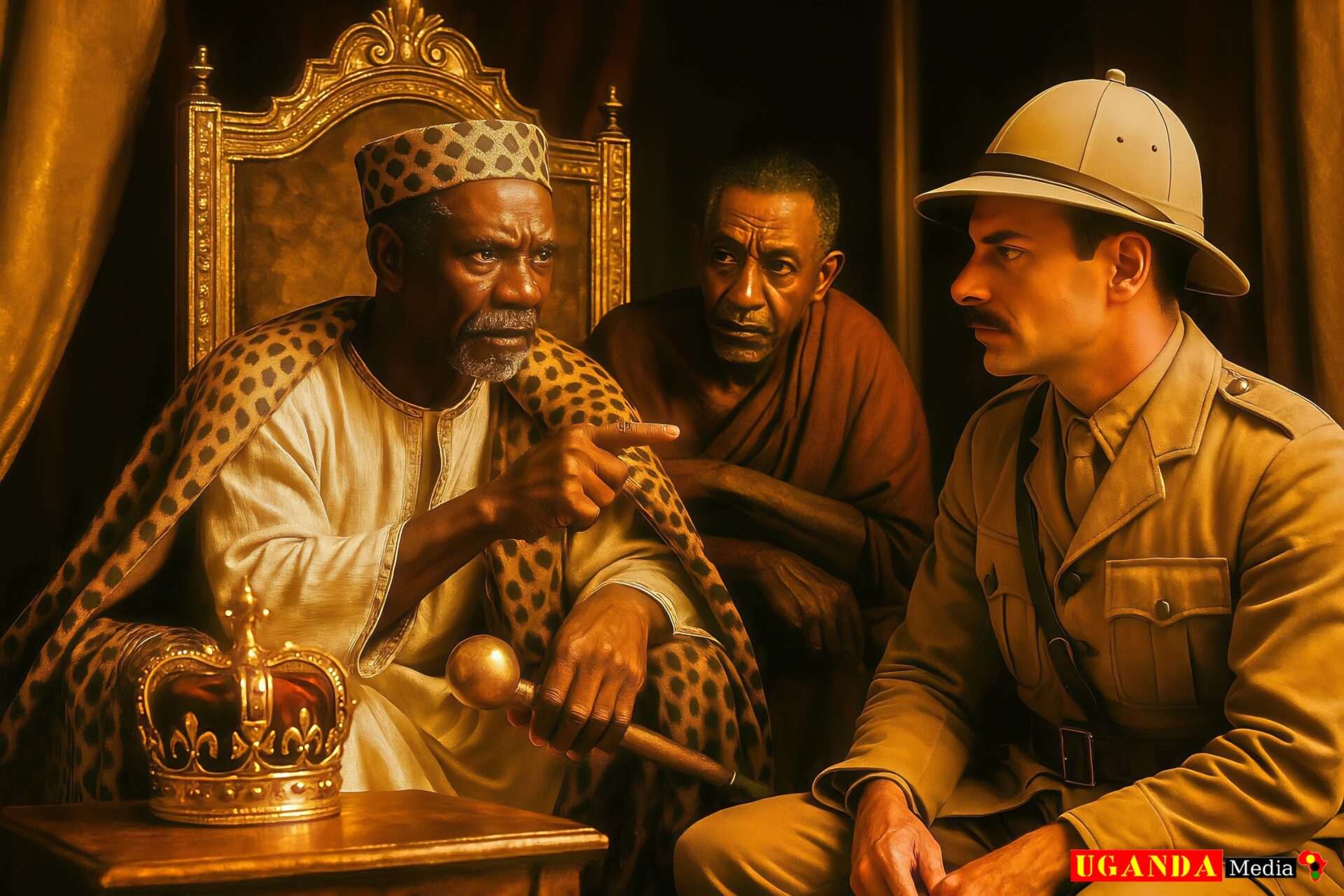
Stories That Shape Identity
As we reflect on Buganda’s journey, it becomes clear that the stories we tell about our ancestors profoundly shape how we perceive ourselves and navigate the world. Whether framed as myth, history, or structural analysis, these narratives carry weight because they embody shared values, aspirations, and struggles. They remind us that identity is not static but dynamic, constantly renegotiated in response to new circumstances. In Buganda, this process has resulted in a rich tapestry of traditions that continue to inform collective action and self-understanding.
Enduring Legacy
Ultimately, Buganda’s legacy endures as a testament to the enduring power of tradition in shaping a nation’s destiny. Its history illustrates how cultural continuity can coexist with adaptation, allowing societies to maintain their essence while embracing change. From the mythical origins of Kintu to the pragmatic politics of Bakungu chiefs, Buganda’s story is one of resilience, ingenuity, and hope—a reminder that the past is never truly behind us but always woven into the present. As Uganda moves forward, the lessons of Buganda’s past will undoubtedly continue to inspire and guide its people, ensuring that this remarkable heritage remains a source of strength and unity for generations to come.

